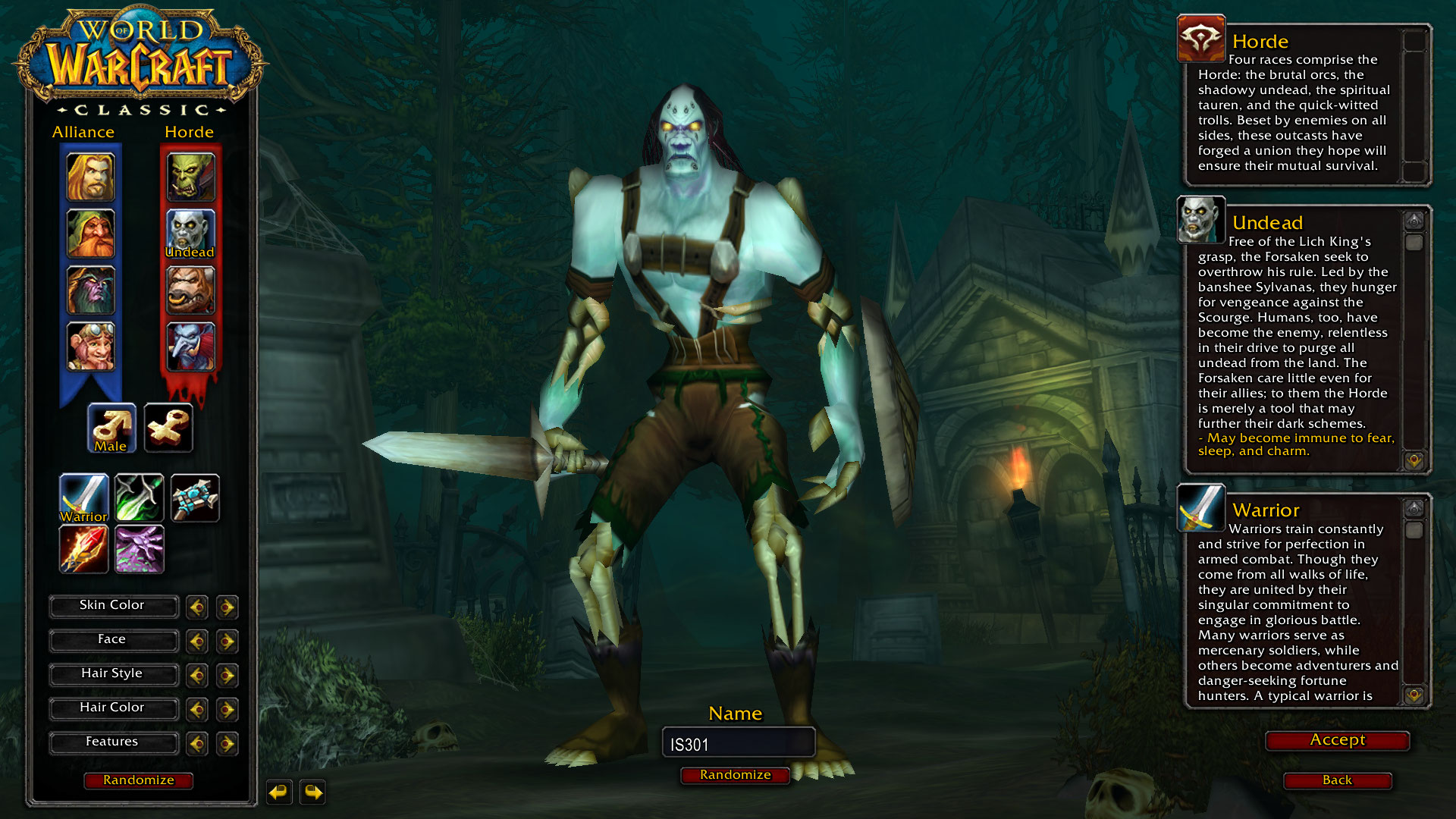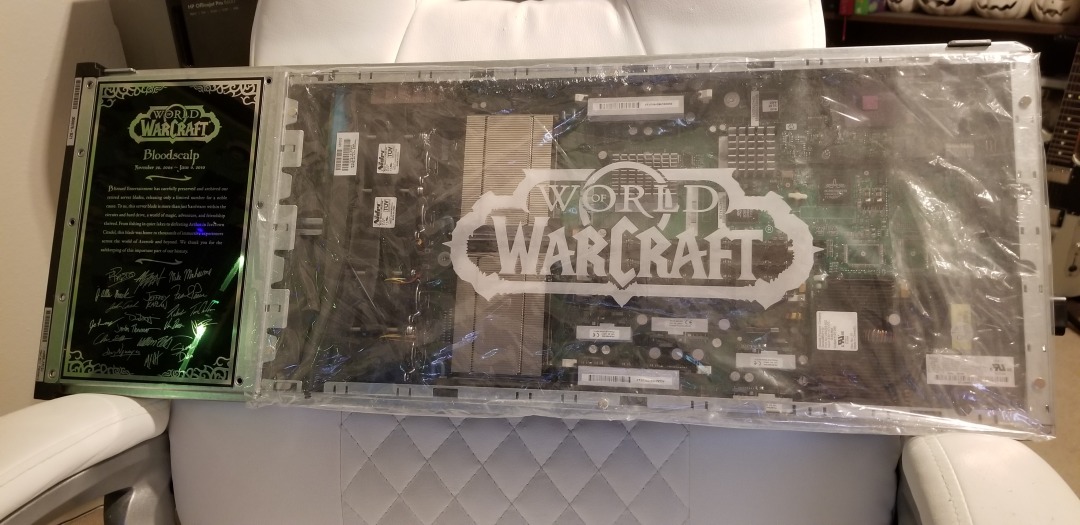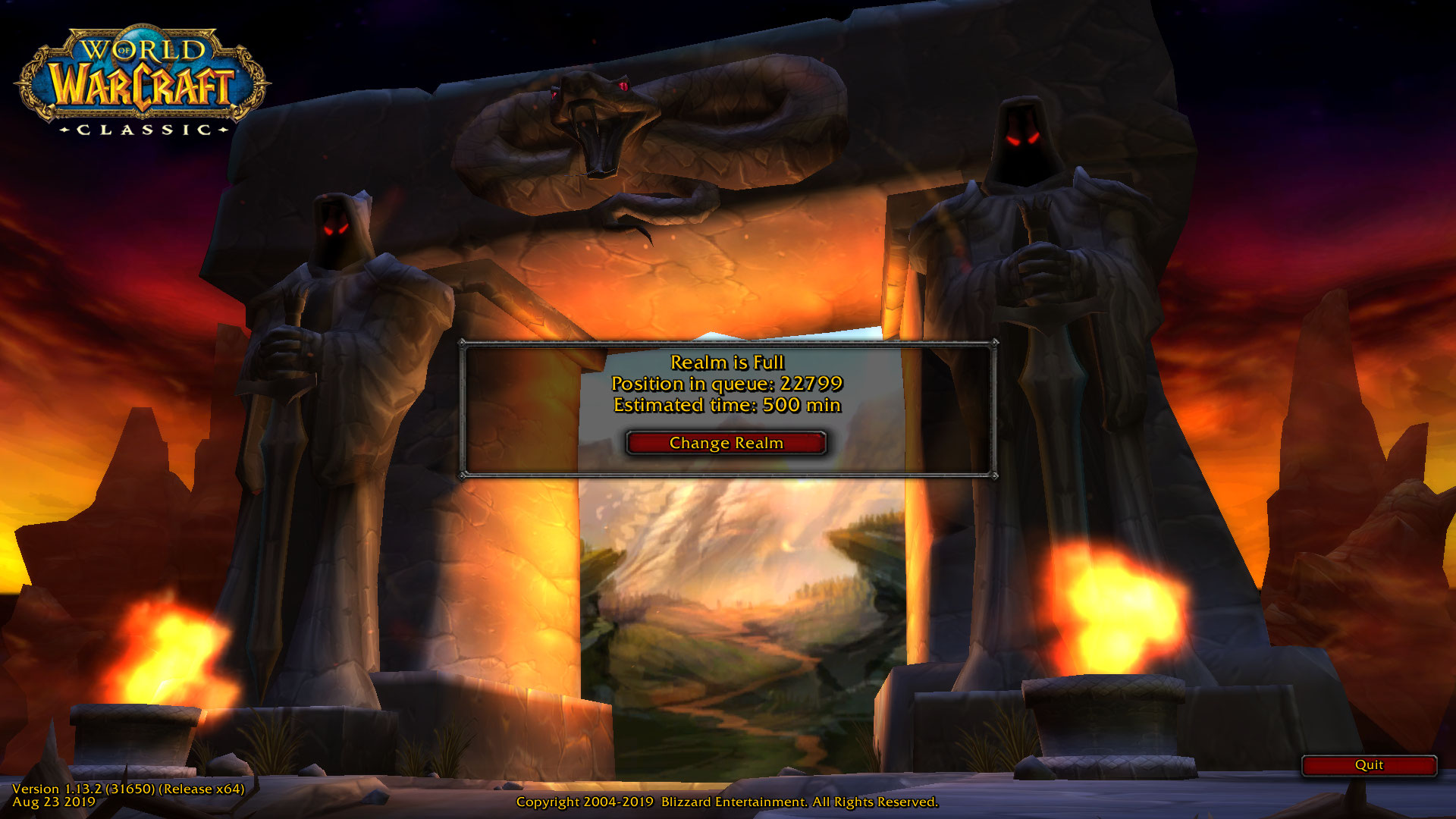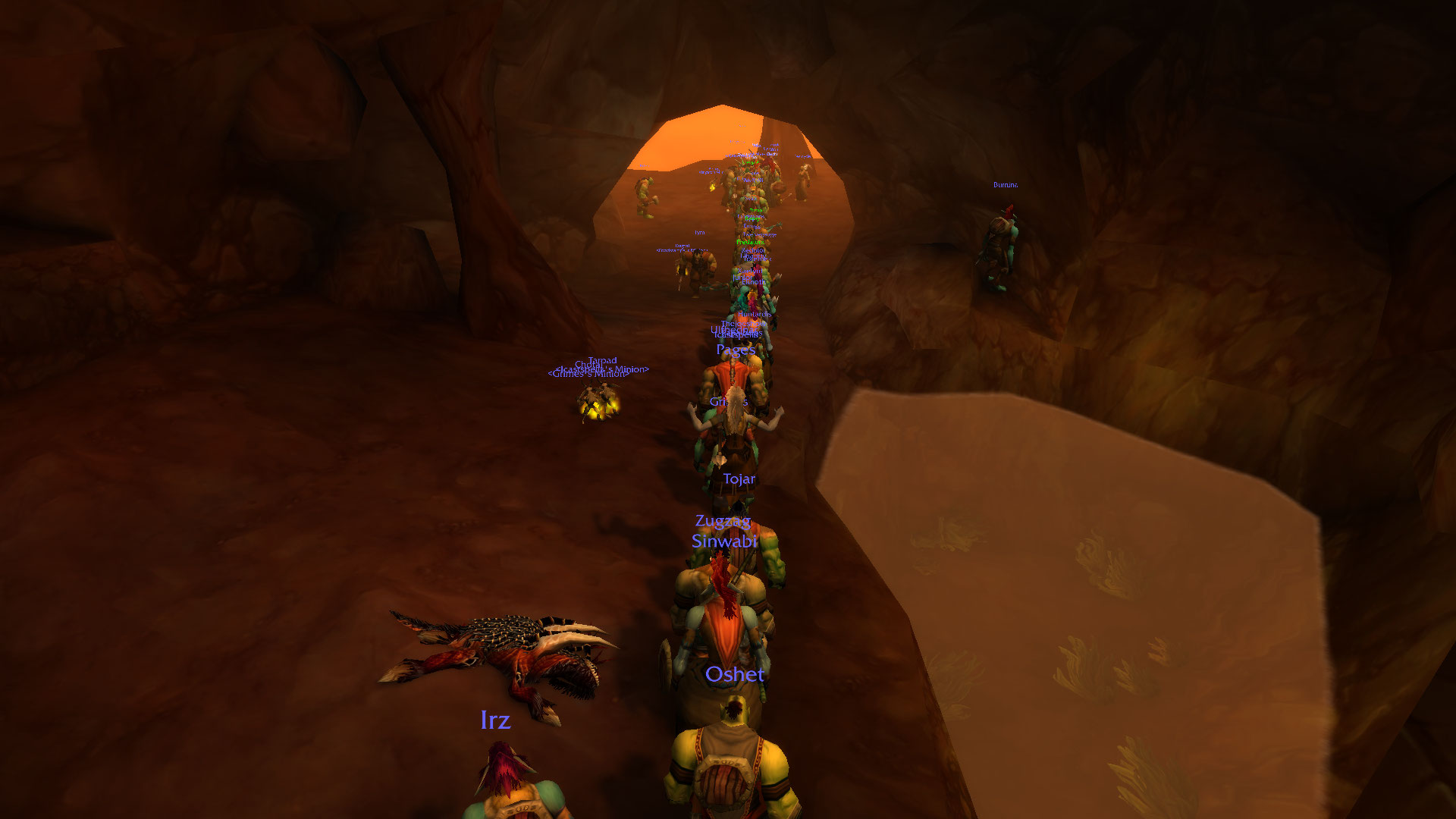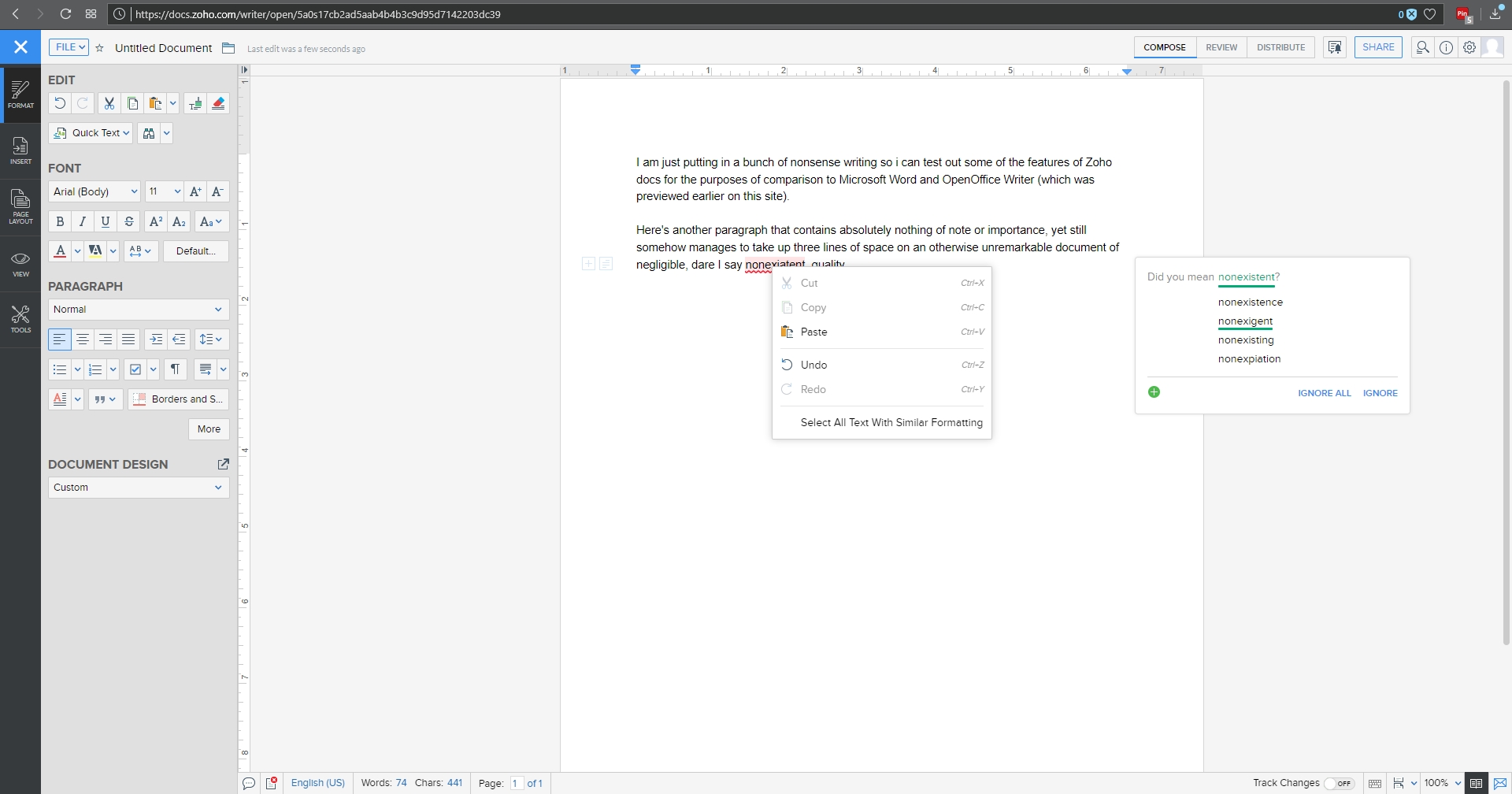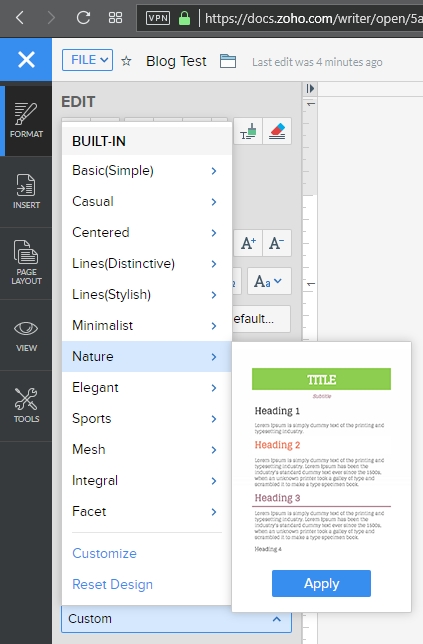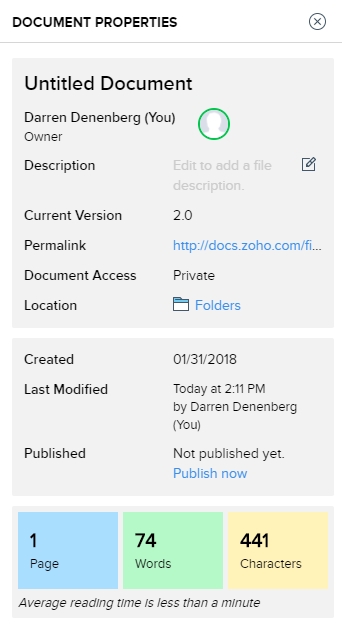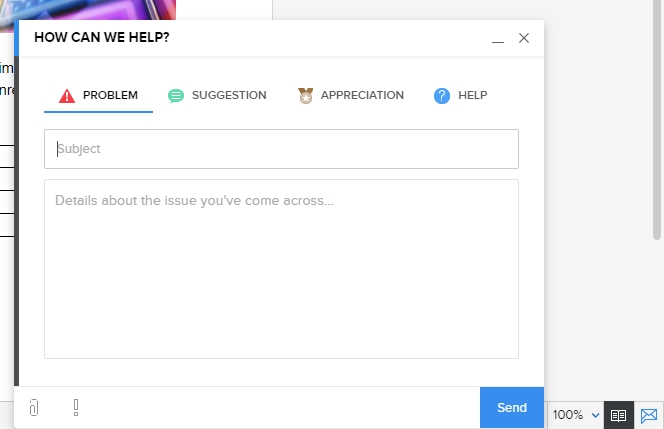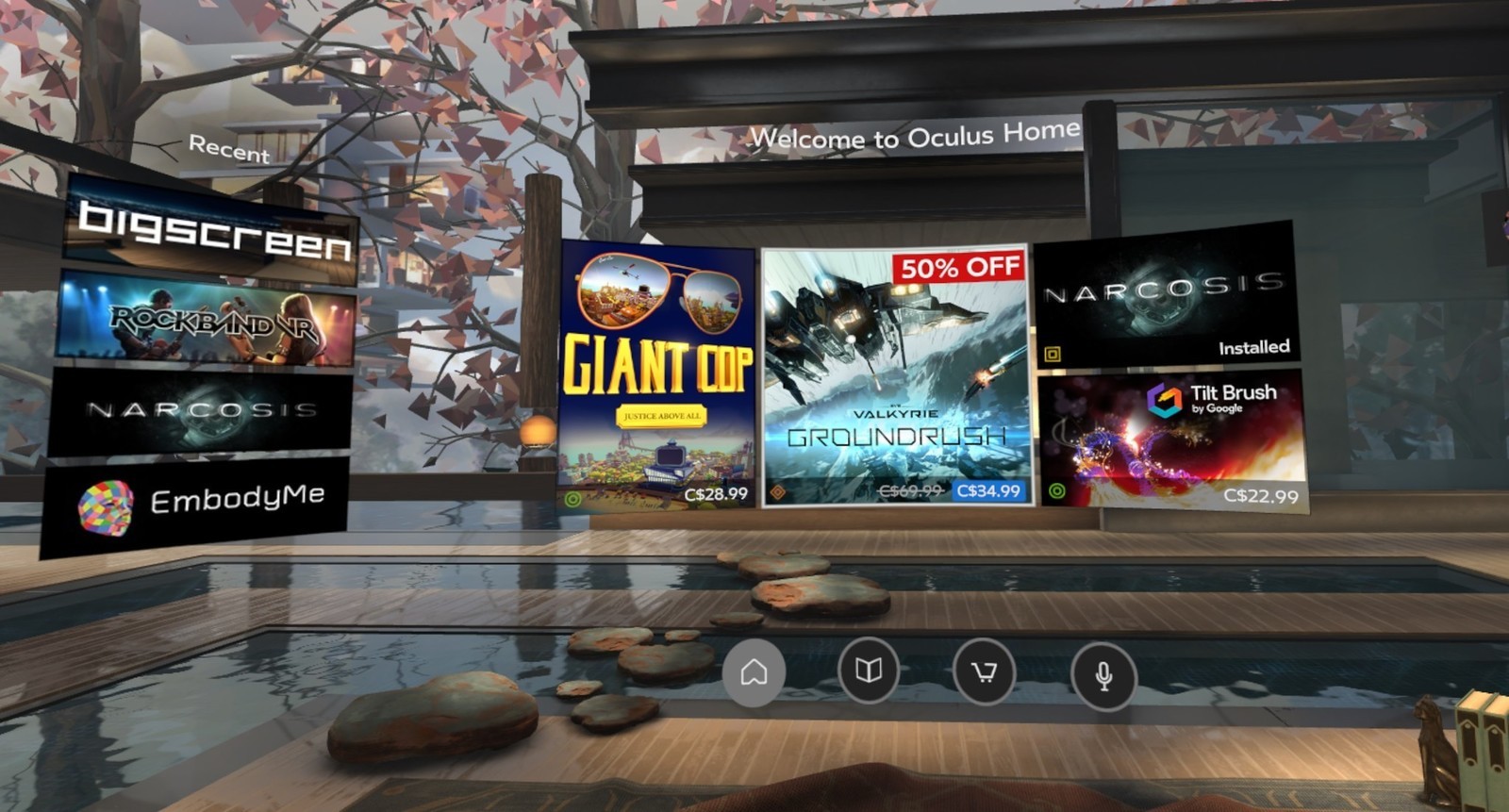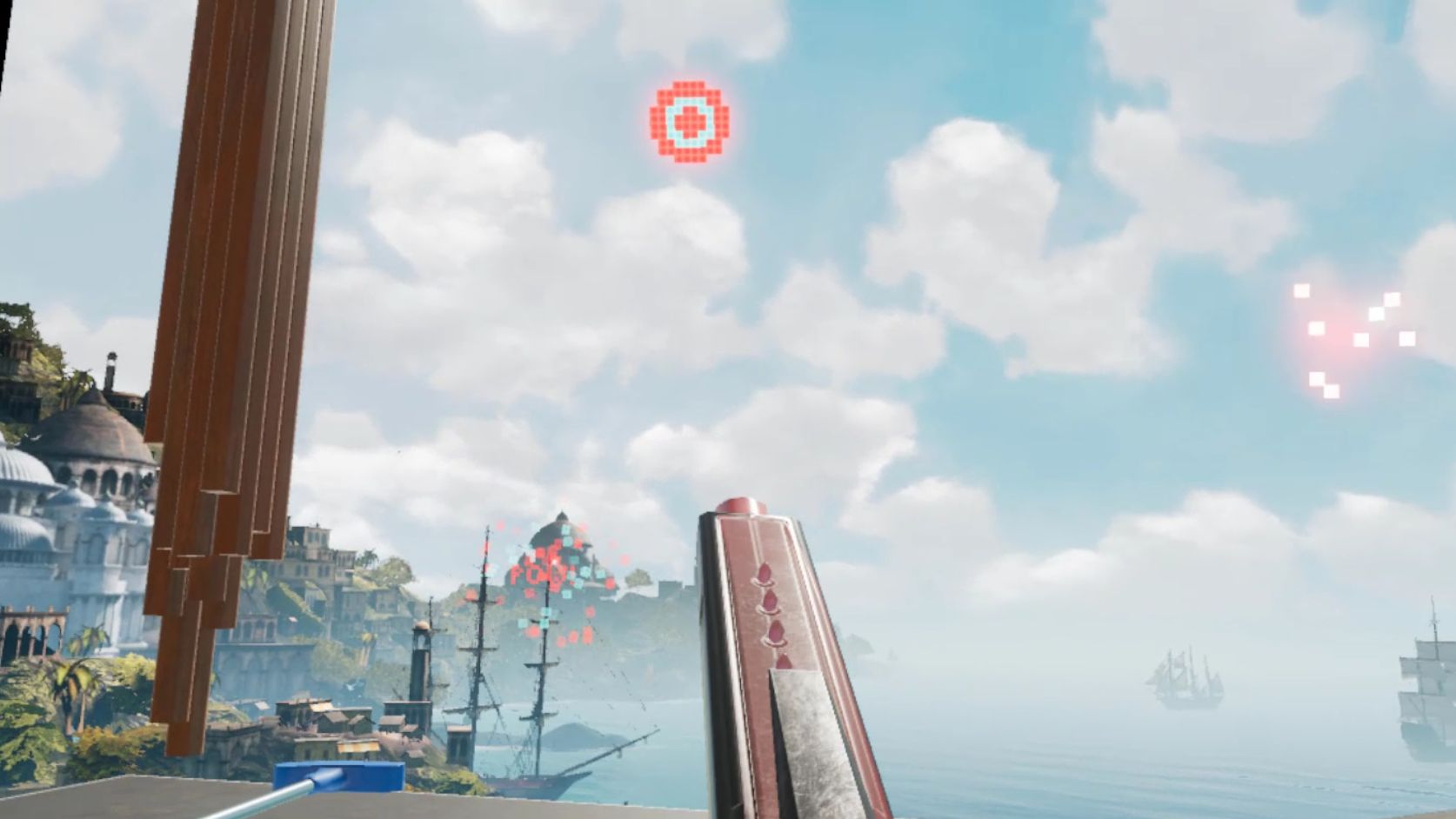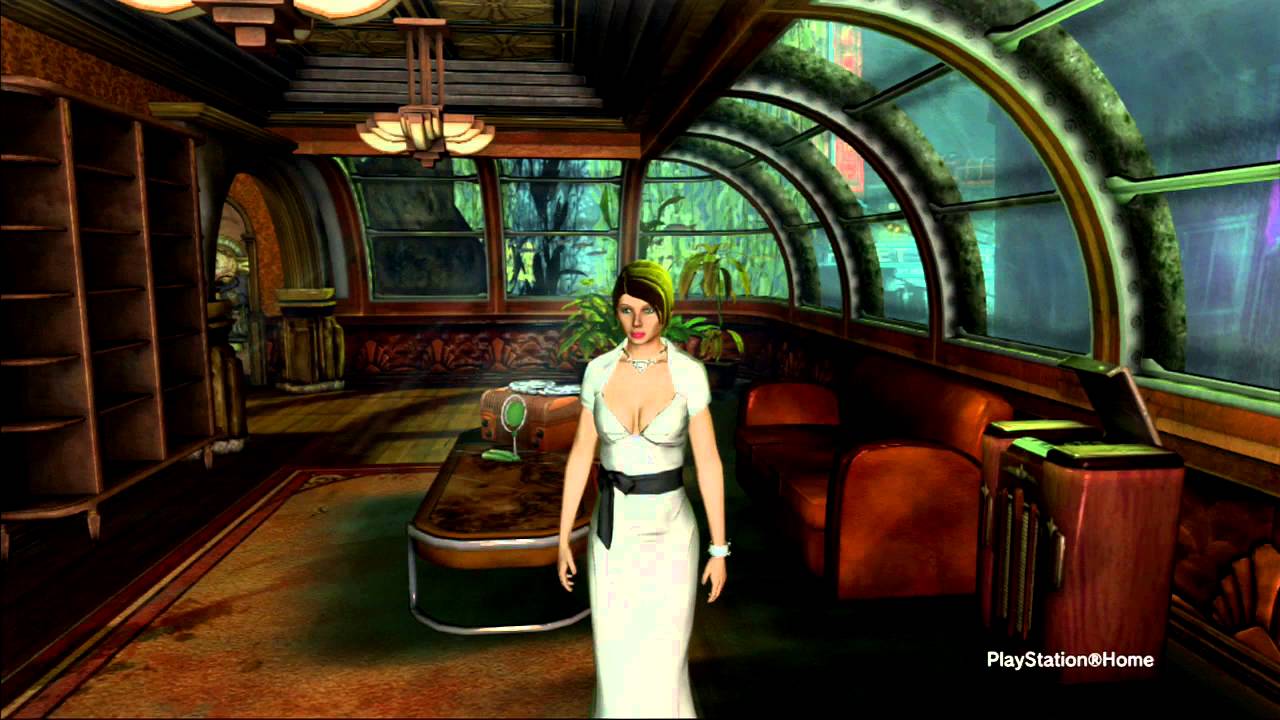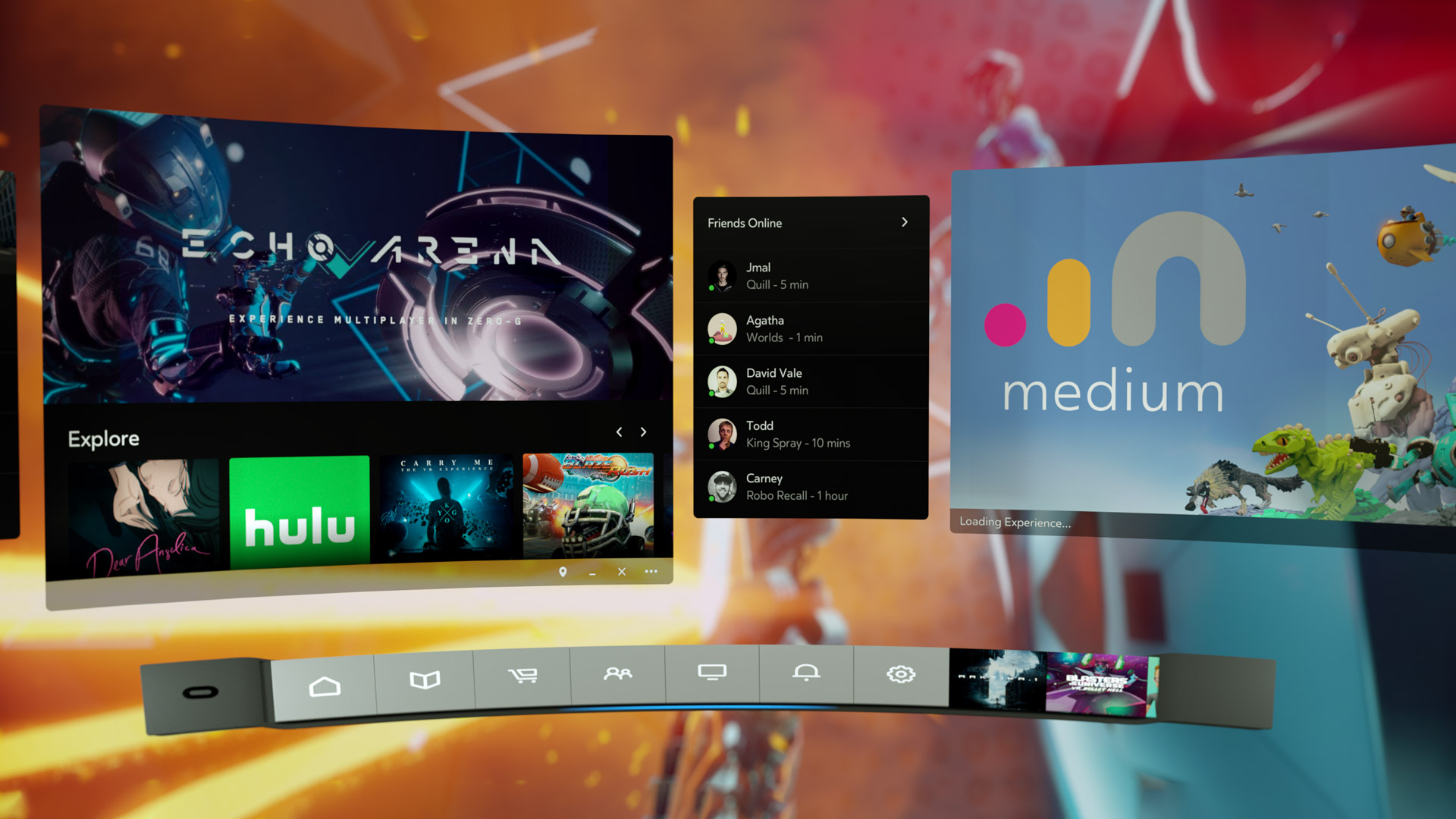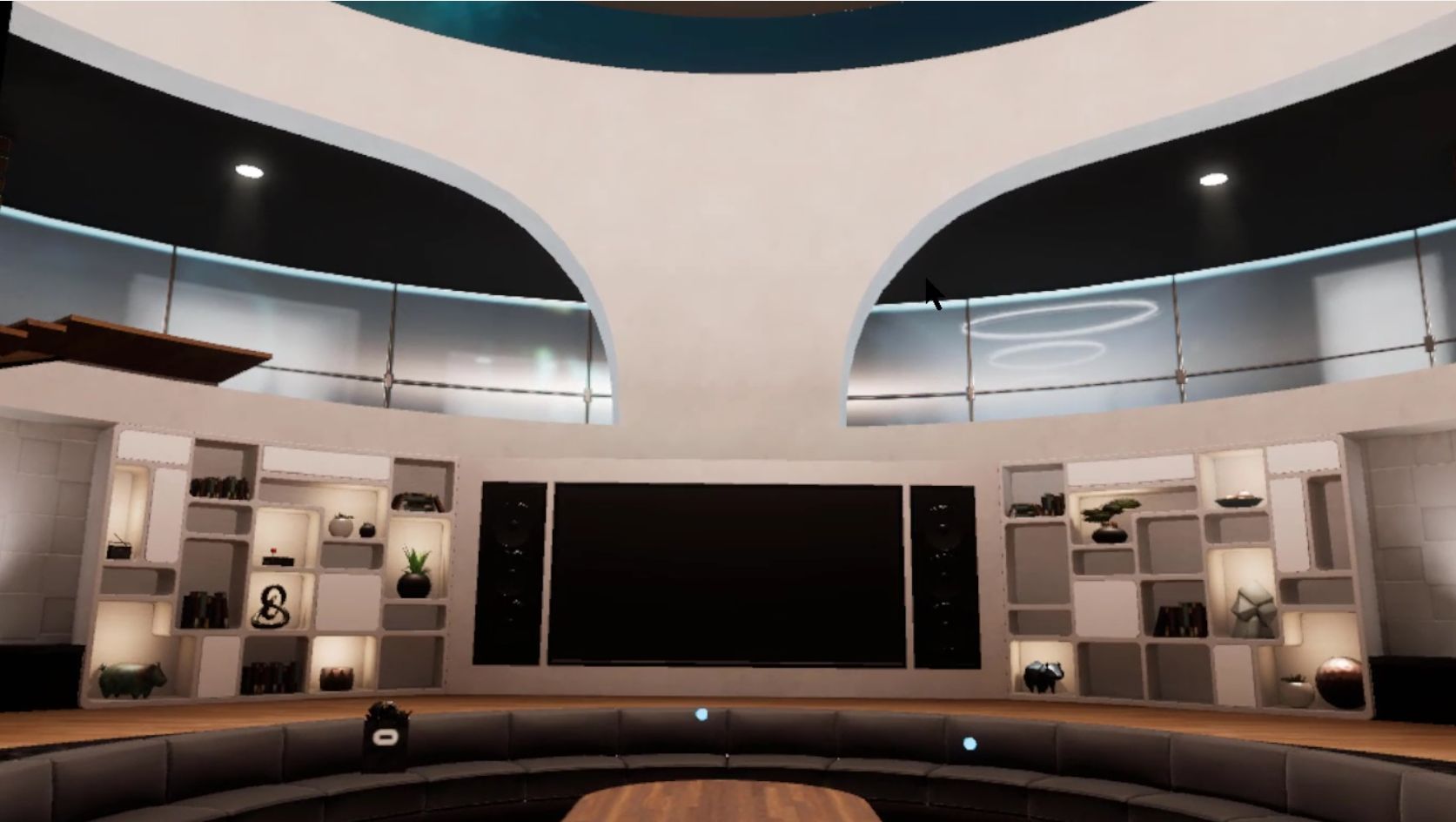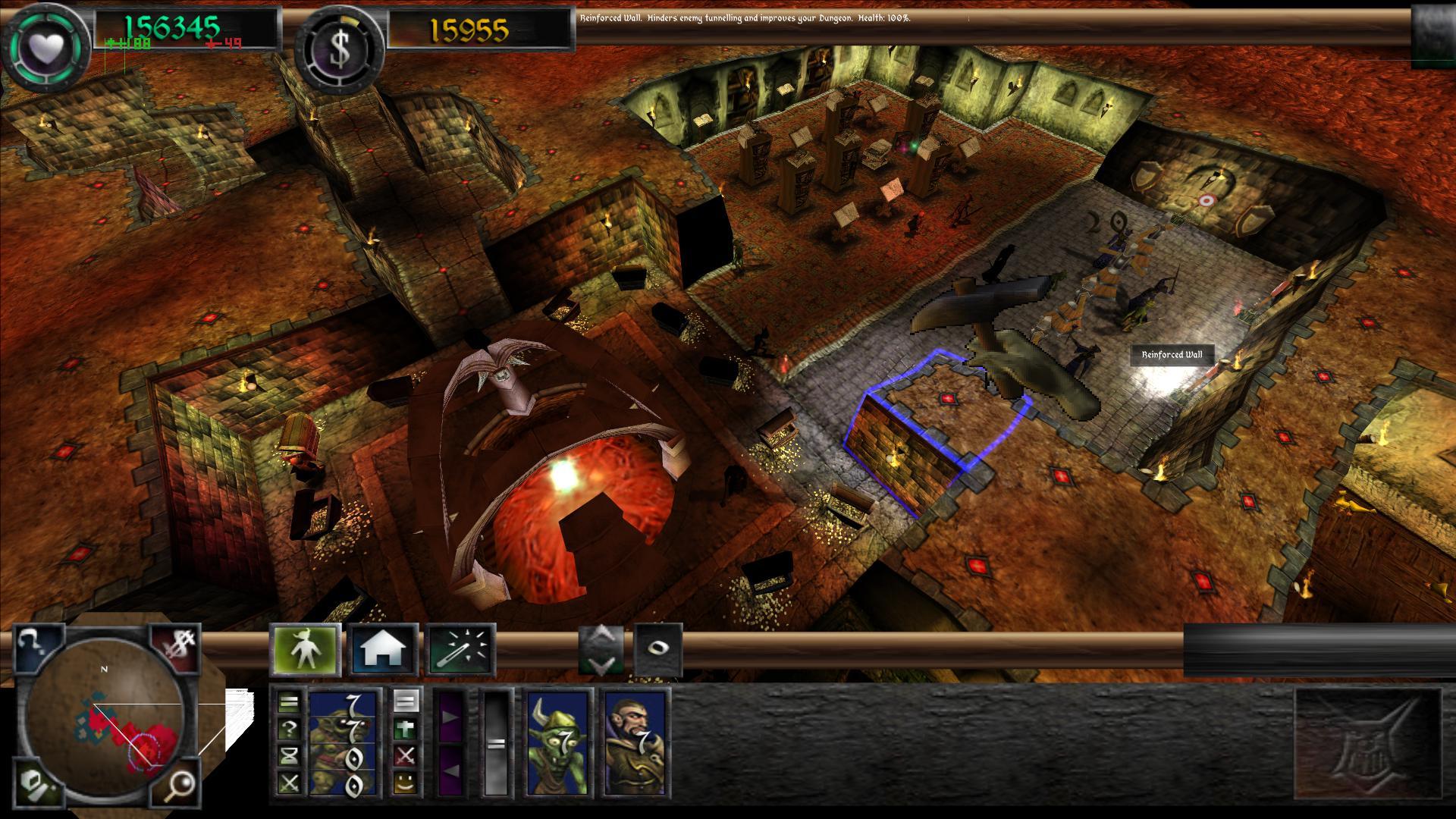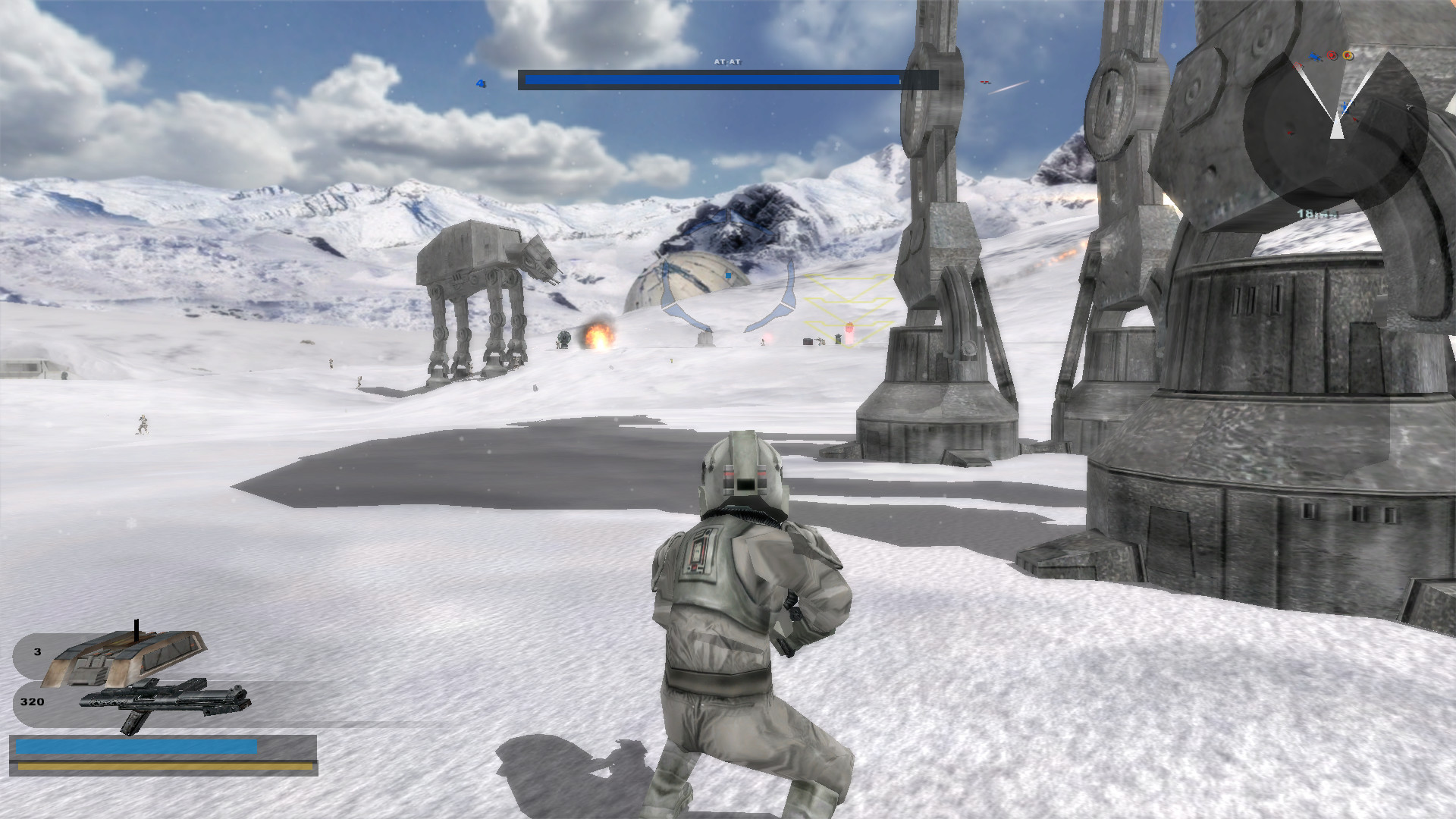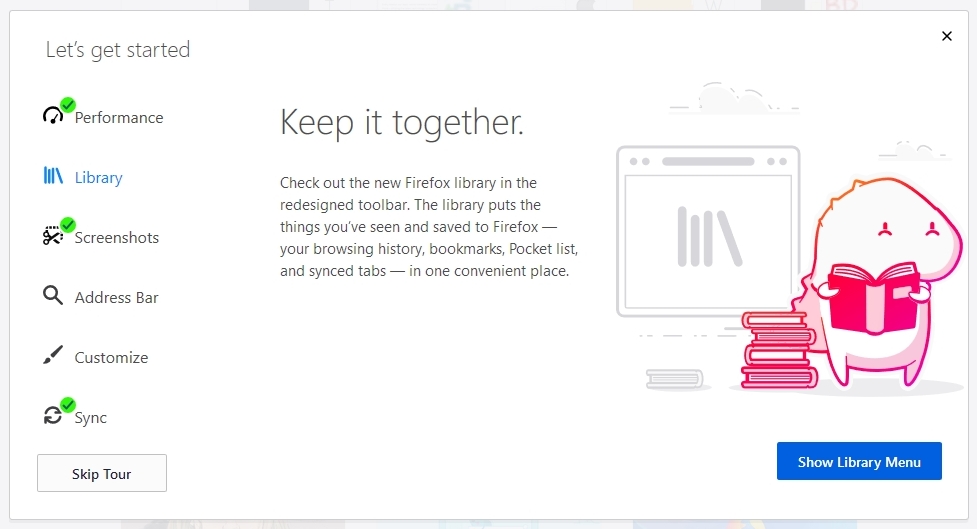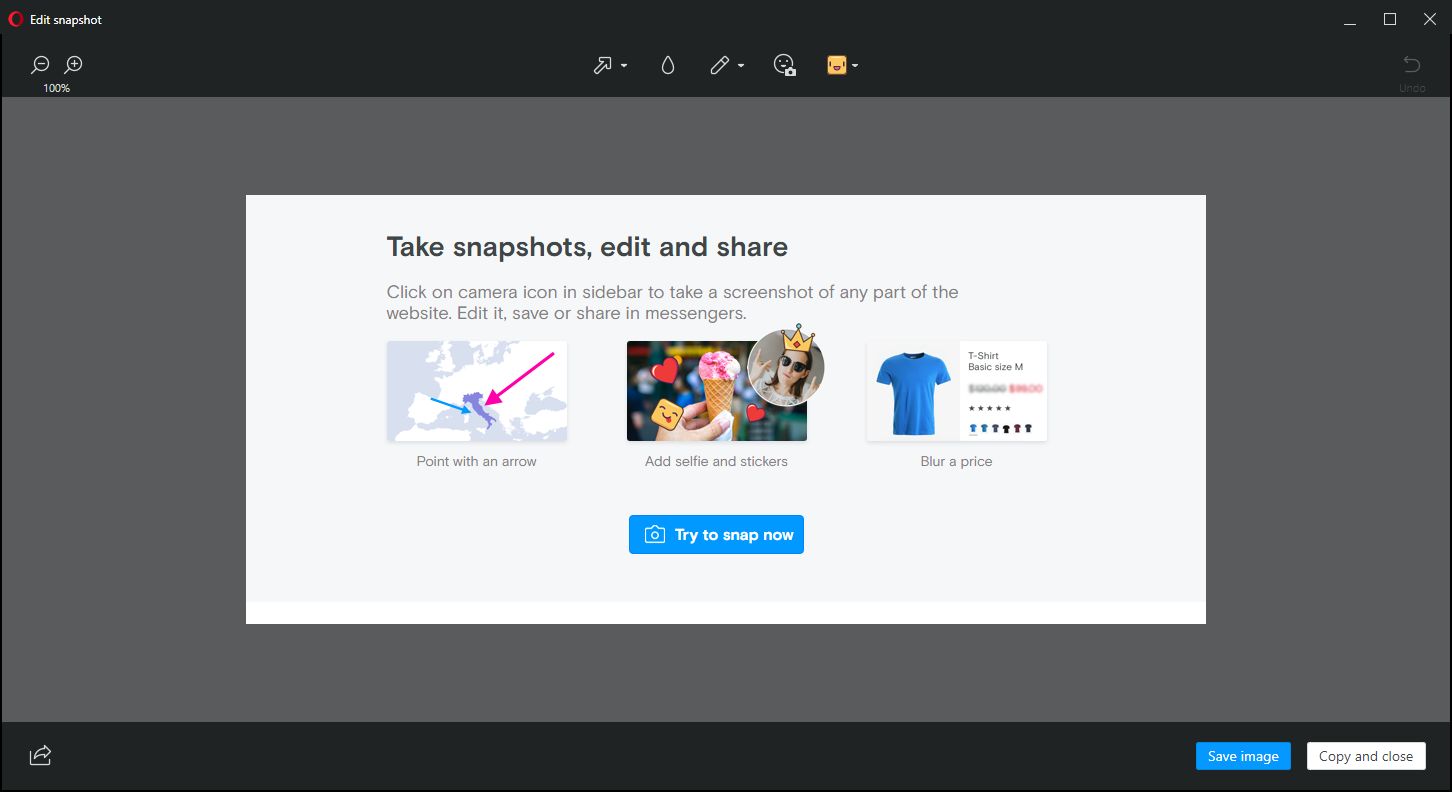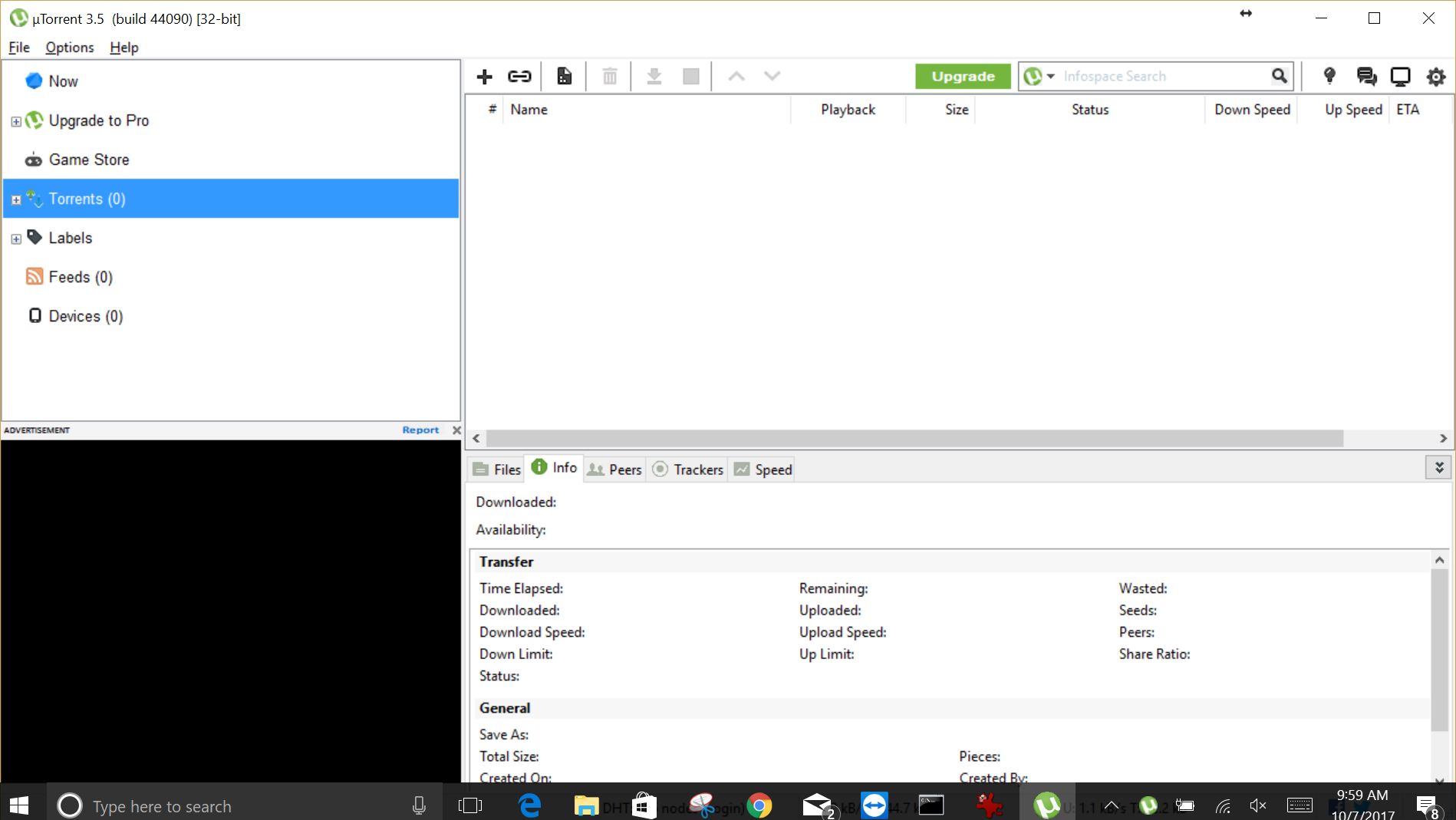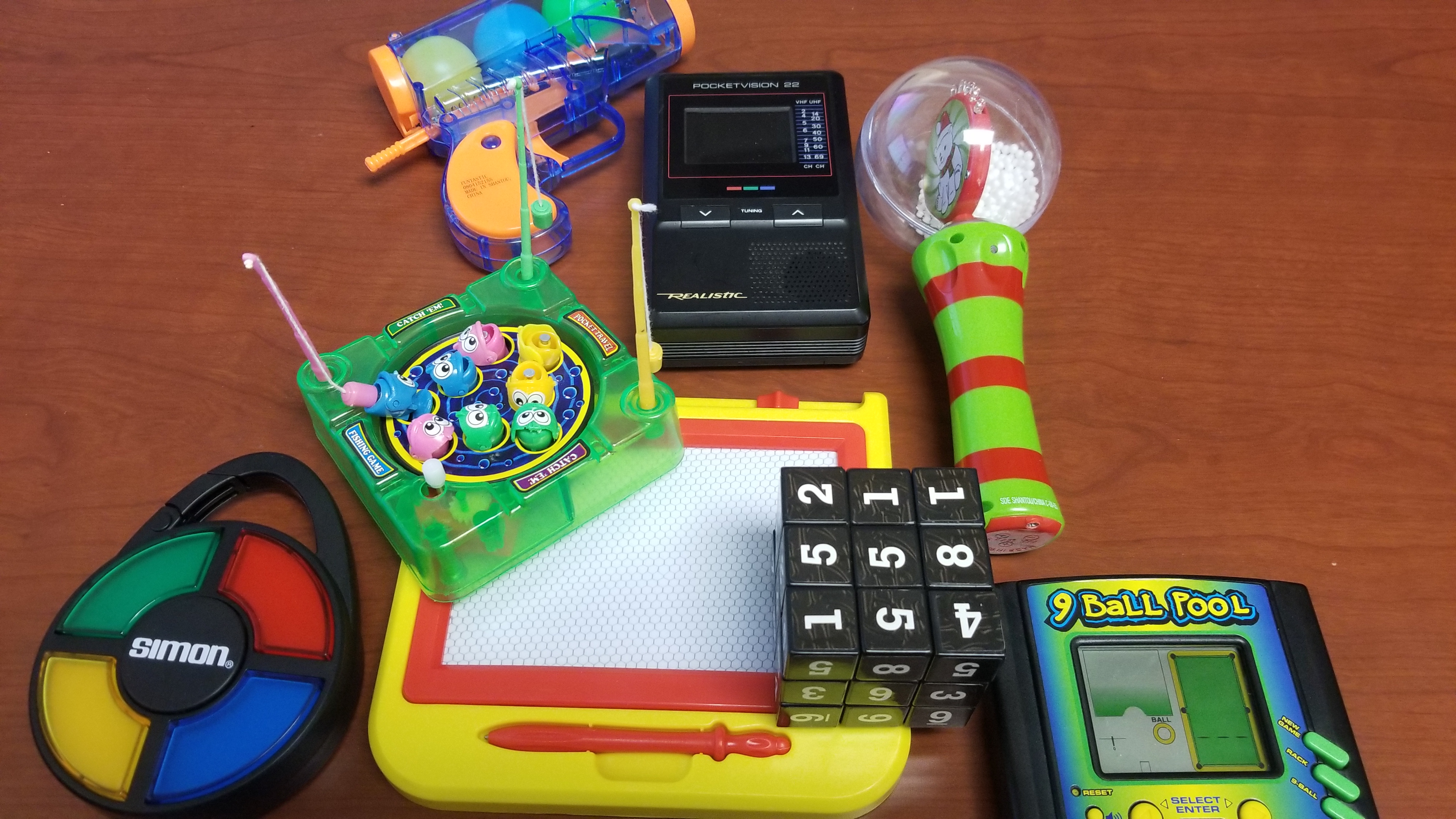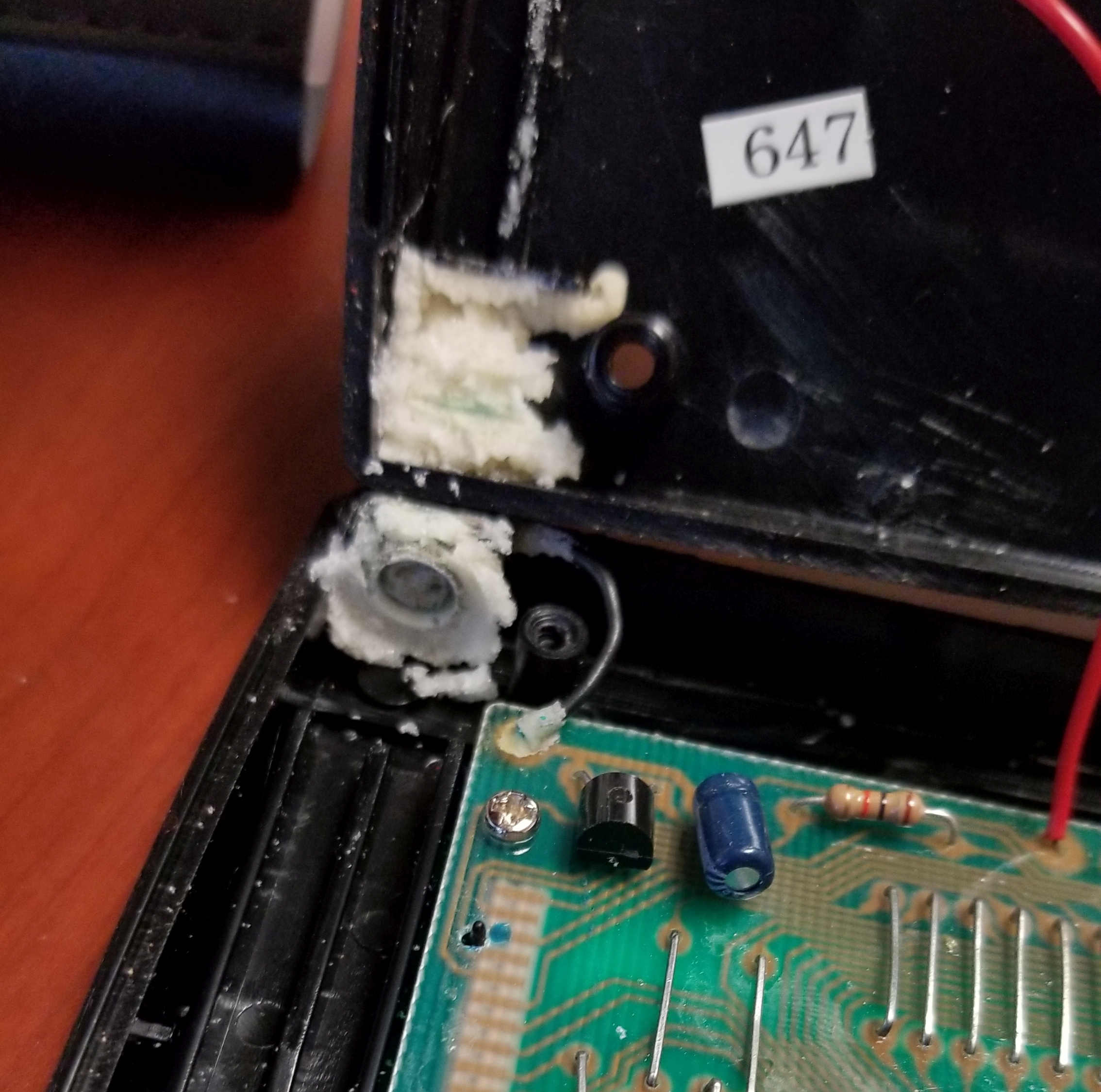Category Archives: Editorial
Returning Home: World of Warcraft Classic Comes Online

On August 26th, fans of the original World of Warcraft (henceforth referred to as WoW), and those who are just curious to see what all the hubbub is about, were finally able to re-experience the original game as it was when it first came online back in 2004, now colloquially known as ‘vanilla’. And boy did Blizzard deliver, complete with massive queues, disconnects, and crowding. But they have also provided what many people have been asking for for many years: The authentic and original WoW experience.
World of Warcraft was first released in 2004, a Massively Multiplayer Online Role Playing Game (MMORPG) in the vein of Everquest and Ultima Online before it. However WoW streamlined the gameplay process and created something accessible, that anyone could play, and eased players into the experience without being overwhelming. It was an instant, massive hit, and has continued to be a juggernaut even to this day. Attempts to topple it, even using popular franchises with similar gameplay such as Age of Conan and Star Wars Galaxies, couldn’t come close to WoW’s success.
In the game, there are two main factions: The Horde, comprised of Orcs, Trolls, Tauren, and the Undead, and the Alliance, comprised of Elves, Gnomes, Dwarves and Humans. Depending on your race, you could be one of several classes: A paladin, mage, warlock, rogue, warrior, priest, druid, hunter, or shaman, each with their own unique abilities and approaches to gameplay.
As the years went on, WoW evolved. What started out as a world with two continents, eight races, nine classes and a tight story to tell, ended up as what many consider to be a mess in terms of overly-streamlined gameplay (e.g.: quest markers and highlighted objectives / objects), homogeneous races and classes (e.g.: many classes were limited to certain races, but now that’s generally not the case; anyone can be anything. Another example: Undead could ‘breathe’ underwater, now anyone can breathe underwater for a comically long time), and simplified specializations that don’t allow for really exploring a particular class.
Combine that with the original story of the Horde V. the Alliance morphing into them working together and sharing quests and zones, a rambling main story with red herring side quests and endless grinding with things such as daily quests, as well as a confusing world structure (A new capital city, Dalaran, now has two separate locations in the game: One in Northrend and one in the Broken Isles. It’s the same city, but in two places, although there is lore for that), and people started to get weary.
Not that it was all bad, mind you. The ‘Mists of Pandaria‘ expansion, which introduced a continent known as Pandaria based on Chinese lore, along with a race of humanoid pandas known as the Pandaren, and the new class of monk, was very well received. Additionally, flying mounts and pets of many types became available as nice additions. But overall, the gameplay itself, the core experience, lacked.

Mists of Pandaria
While all this was going on, something known as private servers began to appear. These were privately run WoW servers that there recreated that original version of the game as it was when it was first released. There was no charge, and people flocked to them. The largest was Nostalrius, which at its peak had, according to Wikipedia, 800,000 subscribers and 5000 – 8000 concurrent players. Blizzard hit them with a cease & desist order, but the coverage of that was severe and intense, and it appeared that Blizzard noticed. I myself played on Nostalrius, and wished it to continue. An interesting aside about it is that when I dowloaded the client, which had to be done as a torrent, I was immediately – while the download was still happening! – sent an email from Cox telling me they had received an official complaint about my IP from Blizzard stating I was pirating the game.
But I digress. Blizard may have noticed, but also said very publicly during a live conference, that ‘you may think you want vanilla WoW, but you don’t.’ They had to eat crow on that, but they did so with grace and humility, and I respect them for being good about it.
They eventually announced that would be creating a classic WoW experience, and it finally came online August 26th, 2019.
I was excited for this too. Seeing the announcement of original WoW gave me chills. I loved original WoW, and was even in the beta so many years ago. It’s strange, because as I would read magazine articles and online posts about it, I didn’t have much interest. I heard the beta was coming and thought ‘why not?’ Well, it turned out to be lifechanging. I’ll never forget creating my first character, an undead warlock of course and of course on the server named ‘Bloodscalp,’ and venturing out into Deathknell, the undead starting zone. The purplish tint of my shadowbolt, the civilized undead, the unique, not-quite-cartoony but surprisingly colorful and detailed environments, and as I would eventually learn the incredible backstory and unique races, including the Native-American styled large bipedal bovines known as Tauren, a really unique offering for a game of this type. So much did I love it that I bought the Bloodscalp server on which I used to play when they were retired for an upgrade.
Eventually, though, after years of playing, it was sadly no longer the game I remembered. I stopped playing for a good number of years after I heard someone yelling in general chat that if they wanted to group with him for a raid, they ‘SHOULD LINE UP FOR GEAR CHECK’ and ‘DO NOT WASTE MY TIME’ and ‘KNOW YOUR ROLE AND DON’T ASK QUESTIONS.’ Remembering how the game was when it started, how everyone was incredibly helpful and pleasant, that one jackass really discouraged me, and he wasn’t even talking to me. That was after a couple of expansions had released, and for those of you familiar with the game it happened in Shattrath, a city and storyline I just could not get into anyway, and I logged off that moment and didn’t play again for five years at least.
Not only were these hardcore players becoming more common in current WoW, enemies became easy to defeat, everything is signposted, there’s no sense of accomplishment or earning your way, and the story, for me anyway, was just confusing and I couldn’t figure out what was going on. Original WoW does not hold your hand in any way; it’s unforgiving, and expects you to read the quest text and figure out what to do. When it was announced, to paraphrase an infamous in-game proclamation, I was definitely prepared.
There was some drama leading up to the event that I myself was caught up in. It was announced that two weeks ahead of release, players could log in and create / name their characters. I have characters I have played with for FIFTEEN YEARS. When I logged in to create my characters on the Whitemane server, which was my server of choice as it is PvP and PST, I was hit with a 45 minute queue and by the time I managed to get in all my names were already taken! Wheels was the name I desperately wanted, and I made numerous posts on the classic WoW reddit sub and in the Whitemane server sub as well asking if the person who had it would be willing to trade or even sell, but no luck. I ended up with Kneecap, which I actually like, but it’s not Wheels.
Well, once the servers came online, while waiting in the ENORMOUS Whitemane queue (see image below), I just happened to also be in the classic WoW Discord watching the live feed of people trying to get in drama when I saw a post shoot by stating Blizzard would be bringing three new servers online, including a PST PvP server named Smolderweb. Smolderweb! I liked Whitemane, but Smolderweb was far more badass than I could have hoped, so I waited. Waited…waited…and the second it came online I pounced, created all my characters, and got all the names I wanted! I couldn’t believe my luck. There was also no login queue, I got right in and grouped up with some great people and had a blast running around the troll / orc starting area. Players even lined up for specific quest targets in a very orderly and polite way. Everything ran very smoothly, there was absolutely no lag, and I couldn’t have been happier with the experience.
To be fair, I saw posts that showed the Alliance also lined up for their quest objectives, so it was good all around.
I find it telling that even though this is no longer WoW easy mode, and that everything has to be worked for (your first ten levels will be hard, until your class specializations start to kick in, and then it will be less hard but still hard), I’ve had the most fun I’ve had in WoW for many, MANY years, and I’m very glad to be back in the world that I left so long ago.
So long Toys R Us, my old friend
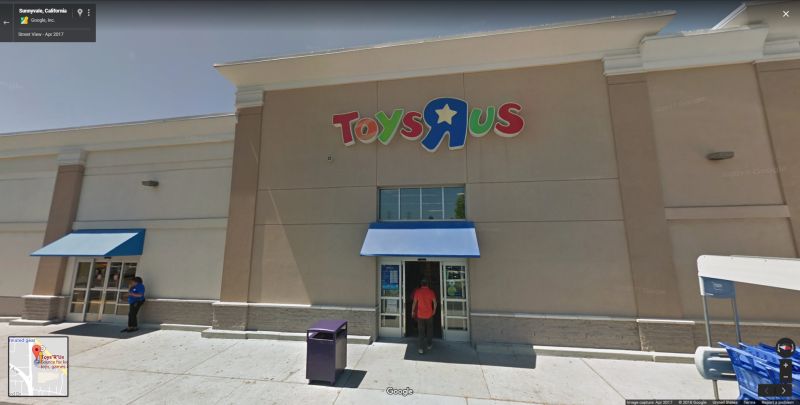
As many of you may already know, Toys R Us is finally closing down for good. While this post is outside the normal scope of this blog, it’s also relevant in so many ways, because it illustrates not just an upheaval in the retail landscape that has been brewing for some time, but also how failure to respond to those kind of tectonic shifts in market trends, consumer demand, fiscal realities, and not exploiting the second most enviable on-line presence can tank a company like Toys R Us. Even now, it still has enough market presence that the closings will have significant upstream and downstream impacts.
More than that, I used to work there many moons ago. I loved it, so this has a powerful personal angle for me.
And they sold games. Rows of glorious games.
I first started working at the Sunnyvale, California Toys R Us back around, what, 1988 or so, in the stockroom, and the header image for this post is the front of the very store where I used to work (added bonus: It was haunted!). My secret plan was to eventually get to the game cage in the front of the store – those of you who have been around for a while may remember that cage, but if not, fear not: I’ll take you there in a moment, but when I started I worked in the stock room in back, and even there I loved it. It was a two-story, seemingly endless room with rows and rows and stacks and stacks of boxes; big items on the top floor and smaller boxes filled with merchandise to be put on shelves on the bottom. And when someone would order something big, like a plastic above-ground pool or a bike or a swingset or something, they would have to drive around the building to receiving, and we would pull the box from stock and put it on a slide – yes, a slide like you’d see in a playground – and send it down to the lower floor, then slide down ourselves and have the customer take it to their car.
We’d also unload the semis that pulled in, filled to the top with boxes in a not-at-all organized manner. The boxes were just thrown in haphazardly, not stacked, we’d have a manifest on paper, and we’d have to climb up into the back of the semi, climb to the top of the pile, and start checking off each box on the manifest, and throw it out of the truck on to the landing, where someone else would, or possibly would not, take it back to the stockroom. And those semis are BIG; they could have hundreds and hundreds of boxes. We never knew what we would get, it was completely random, and it was great. Good times. I saw on Google maps the semis still pull up to the back like always, I just hope now they have at least somewhat automated the progress, although I guess it doesn’t matter anymore.
After a while, I was moved out to bikes, then for some reason to baby stuff which was, surprisingly, still pretty fun – all the excited new parents made it enjoyable (crib recalls were *not* enjoyable, though), and then, I started getting asked to man the game cage.
Finally, I had arrived.
You see, in the 8-bit and 16-bit eras, and even into the 32-bit eras, games were simply represented by their covers in the game aisle. There would be a card that had a picture of the front of the box and the back of the box, and underneath each card were slips of paper with the name of the game and the price printed on them; it’s very similar to how Office Depot does furniture sales now, if you’ve ever seen those. Anyway, if you wanted a particular game, you would take the paper up to the register, pay, and they would give you a ticket you would take to a small booth at the front of the store, and inside that booth was nothing but games. Games everywhere. So many games! You’d give the ticket to the person in the booth, often me, and they’d give you your game. For me, it was a paradise being in there, seeing all the games that were available, reading the boxes and looking at screenshots, getting the excited kids – and sometimes adults – their games, even keeping it clean and organized was a joy. At that time in my life, there was nowhere else I would ever rather be. As I started school on the east coast, I would occasionally work over the summer, but eventually I had to dedicate more time to school and life, including summers, but I never forgot how much fun that job was at Toys R Us.
Also, I looked high and low for a picture of the game cage, but amazingly, I could not find a single one. I did find a couple of the game isles with their paper tags, though, although I’m surprised that even they are hard to find. If anyone out there,anyone reading this has any pictures of TRU game cage, please send it/them along – even Reddit couldn’t help!
I suspected something was wrong all the way back around 2001 or so, when the stores were redesigned to be more ‘playful’ and less like narrow grocery-store isles, only taller. I don’t recall anyone have much of an issue with it, but I suspected that it was a response to ‘something;’ you don’t embark on a complete redesign of an iconic store without being motivated to do so. Later I learned it was because of slagging sales, something that has plagued the chain for a very long time. They tried again in 2015, and we all see where that went.
It took them clear until 2017 to realize the importance of a well-designed, functional, aesthetic website, yet this is also a result of an epic, colossal screw-up on their part many years earlier. See, when Toys R Us first developed their online presence, they did so by partnering with -wait for it – Amazon, all the way back in 2000! That’s when the Internet was still in its fledgling stages, although to the point that e-commerce was starting to take off. If Toys R Us had taken a different path, they could have ridden a wave that saw Amazon become the behemoth, retail landscape-shifting e-commerce megacompany it is today, so much so that Jeff Bezos is now the richest man in HISTORY.
But no, they screwed up, and screwed up big. Instead of leveraging their partnership, in 2006 they sued to get out of their agreement with Amazon in 2006 by saying Amazon breached the terms by allowing other vendors to sell toys as well, which prompted Amazon to countersue claiming TRU didn’t fulfill its obligations and left many orders unfulfilled. It ended badly for Amazon at that time, but it foreshadowed a bad ending for TRU in the future. My guess is they wanted to create their own online presence, although Amazon was, even then, generally king of the hill for this kind of thing, and TRU never did get it right. Other companies had partnered with Amazon as well then broken away, TRU was not the only one, but those other companies, such as Circuit City, well, we see where they are now. Not that leaving Amazon was the sole cause of their demise, but they could have utilized those partnerships much better than they did.
There was also Bain Capital. Yes, Mitt Romney’s Bain Capital. In 2005, they made a leveraged buyout of TRU, shifting all assets to a holding company. The problem is, the toy market has always had narrow margins, and with a leveraged buyout using the assets of the bought out company to leverage (hence the name) the huge loan that is used for the buyout, the assets themselves need to be worth something. Toys aren’t a good asset group in that in that way, and it ended up dumping an enormous amount of debt on top of the company, about $5 billion, and I would have thought anyone could see that would never work out. With $400,000 annual payments towards that loan, they were crushed form the get go. Ironically, or more saddening and angrily, it was Bain Capital that also bought out KB Toys, only to force them to sell thanks to crushing debt as well, and who did they sell to? Toys R Us! Those two aren’t the only ones Bain has impacted, either. Although in fairness, Bain has also had many successes; they wouldn’t exist otherwise. It’s just that these hit close to home for me.
Even so, none of it would have been necessary if Toys R Us hadn’t been mismanaged to this point. To me, they are the Sears of toy stores. Grossly overpriced, absolutely not competitive in any way, worrying on store design instead of competitiveness, yet also haveing been, at one point, the trend setter (remember the Sears catalog?). They couldn’t see the forest for the trees, and focused on the wrong things at the wrong time, allowing competition to blindside them. What could one expect when they bring in the former head of F.A.O. Schwarz, the most expensive toy store to ever exist, to turn things around? Oh right, TRU bought F.A.O. Schwarz in 2009, along with KB Toys, then closed it down. Oh the irony. I think the writing was on the wall a while ago.
Many people online are lamenting the closure of TRU, however it seems many of them never actually went to TRU, but they don’t want it to close either because of overpowering nostalgia. That’s me; I haven’t actually been inside a TRU in years, and the last time I went it was quiet, a little dirty, the people working there seemed like they wanted to be somewhere else, I didn’t find anything of interest, I usually just went to the Target across the street. But I can understand how these people feel, I of all people can understand, and it has also hit me hard, perhaps harder than those who went there as customers. I loved it there, I could tell so many stories, from both the employee and customer perspective, and I am very sad to see it go.
Zoho Writer: An excellent online alternative

I recently gave my opinions on OpenOffice.org’s word processing software Writer. My conclusion was that while they have certainly made improvements over the last twenty years, it still just doesn’t hold up to Microsoft’s behemoth package, either online or off. However, that doesn’t mean there isn’t an alternative for those who seek: I also mentioned in that post I would be reviewing Zoho Writer, the online word processor from (obviously) Zoho, which turns out to be a very competent competitor to Word. It’s not the perfect replacement, but it comes pretty close for everyday use, and then some.
Zoho offers many applications and services, all of which are relatively competent. And I’m not talking just basic office suite stuff either; they have everything from CRM platforms to retail inventory management. For an online service, they have a surprising breadth of applications on order.
As you can see, there is a lot there. For this review I’ll be focusing on their word processor Writer, which I feel is a highlight of their office productivity suite, but it’s important to note the range of capabilities they have, especially as compared to other online options. I also want to mention that their PowerPoint equivalent, Show, is absolutely fantastic as well, while their version of Excel, Sheet, is also very good. It doesn’t quite live up to the rest of the suite in terms of functionality or design, but that’s not to say it’s not good – it is. But it has significant room for improvement, especially considering its less involved and less usable interface, with sparsely-populated toolbars, buried commands, and no sidebar, especially when considering it’s for such a powerful program as a spreadsheet. Indeed, it’s the one instance in which I can say OpenOffice’s alternative, Calc, is the better option, with more features, a more familiar interface, and better design all around.
That being said, Zoho is the superior option for everything else, and OpenOffice doesn’t provide any enterprise functionality or features beyond the basic office suite anyway. Here we’ll be talking about Writer, a name shared with the OpenOffice equivalent (so don’t mix them up!) and it will hopefully give a good impression of how it all works.
I threw together a nonsense document to mouse around with, and below you can see the spell check, which gives the initial suggestion as well as alternate suggestions, which is nice, although it doesn’t offer meanings / definitions as does Word. You can also see the Format menu in the sidebar to the left with all the functionality you would expect, including Cut / Paste / Format Painter / etc., as well as standard font and paragraph formatting options. Two additional features I think are very useful are the Quick Text option, which allows you to specify a particular piece of text that can be inserted with the click of a button or shortcut key; very good if you frequently use the same phrase or sentence or whatnot in a document. The other nice feature is evidenced by the very faint two boxes you can see in the left margin; the plus and text boxes. See those? You might have to look closely. The box with the plus is an insert menu, and the text box opens a formatting menu. They follow your insertion point automatically, and they turned out to be quite a convenience.
A variety of page layout templates are also readily available, with more available for download and very easy to implement.
Although this document is hardly complex, inserting an image and table is something that can trip up even stalwart word processors, and that was true here as well. Inserting the image was easy and worked fine, however arranging it for word wrap was more problematic. Smaller images resulted in much more layout success.
Inserting a table was also quite easy, and I especially like the live preview it provided as I hovered the mouse over the design options, all of which were neatly contained in the Design tab of the table options window. This is very similar to how Word will open custom contextual tabs that provide additional functionality depending on the specific element you’re working with.
Manipulating the table was much easier than manipulating the picture, which wanted to jump around the page, and even manipulating individual cells was very smooth; everything from changing their dimensions to their color to their alignment and everything in between worked perfectly the first time.
Now is when I need to mention the biggest advantage of (Zoho) Writer over (OpenOffice) Writer: .docx compatibility. OO Writer doesn’t have it, and that’s a huge knock, a terminal knock, actually, against it. With Zoho Writer, when saving a document, you have multiple options: You can save to a cloud service, and Zoho has collaborated with many as you can see (although I couldn’t help but notice the logo for OneDrive is oddly blurry, while the others are very clear), or you can download the file as a Microsoft Word .docx, or even as an .odt file, which is the open standard used by OpenOffice itself.
As one would hope, there are also multiple ways to get some statistics about your document. They run along the bottom as one would expect, but I am also a big fan of the Document Properties as accessed by clicking on the ‘i’ with a circle around it at the upper right of the window. Not only does this provide a wealth of information about the document itself, but coming from an HCI perspective, having the page count, word count and character count in individually shaded, easy to see and immediately locate, is genius. In terms of information presentation and information availability it puts those interrelated metrics right next to each other yet separated visually and thereby forces them in a cognitive whole.
Not to get too far off topic, but the reason I’m so enamored with this design choice is that humans, in order to make sense of, and order out of, information and stimuli presented to them, engage in several practices that help them in organizing what they see. One of them is known as Proximity, in which spatially similar images are considered as part of a larger group, even if they’re not related, so when they are related, as these three metrics are, our ability to process them, their meaning and their relation to each other is increased even more. Another is Similarity, in which when considering multiple individual field objects, those that are similar in some dimension, whether it be shape, color, orientation, or whatever else, are considered to be part of the same group, again even if they aren’t. Those are two reasons presenting that specific document information is so brilliant – it addresses the way we as humans process information.
Consider the Windows logo below. This is an example of both proximity and similarity. We consider the logo as a single shape because the four smaller squares that comprise it are both similar and proximal.
This is the Writer document properties pane, that uses these concepts to such great effect.
It even estimates the average reading time. There is nothing I don’t like about this information window, it’s one of the best interface designs I’ve ever seen, and I’ve seen a lot.
Before I just put up the rest of the menu dialogs for your perusal to give you an idea of how they’re implemented, I also want to address a nice usability touch they have incorporated in the form of a support icon. See that little blue envelope there way on the right hand side?
That’s the Writer support icon, and it opens up a window that allows you to offer feedback or ask questions directly. For a free service, that’s pretty remarkable. It really gives the idea – true or not – that they are at least receptive to feedback or requests for help. I was very surprised by that, and pleasantly so.
As you can probably tell, I think Writer is a great program. It’s not often I get to gush over software, but this company is so unknown, comparatively, yet they have such a well-designed and functional, free service, I’m surprised we don’t hear about it much more often. According to their webpage, they are a private company but one with five thousand employees! They hold user conferences and expos – that is not small time, yet their name recognition, even with millions of users, is small. If I may be so bold, even sacrilegious to some, I’ll even go so far as to say it destroys the offerings from Google. The only service that can compete is Microsoft’s Office 365, and even then it’s just a little better, plus Zoho integrates with all of them anyhow. Zoho has really created something great, and I encourage anyone interested in alternatives to standard office suites to give it a try.
Here are some functional dialogs if you’re interested in seeing all the options available before taking the plunge.
[Best_Wordpress_Gallery id=”8″ gal_title=”Zoho Dialogs”]
And now it’s Opera’s turn

In a recent post, I lauded the new release of Firefox, known as Firefox Quantum, or Firefox 57.0 if you’re in to numbers. The release introduced new features and fixed many issues that have plagued it, in some cases, for years (memory leaks, I’m looking at you). One of the things I really appreciated was the ability to take a full-page screenshot that would capture the whole page, regardless of how much of it was off-screen. For someone like me who uses screenshots in class and on this blog frequently, it’s a godsend.
Having said all that, I also mentioned right at the beginning of that linked post that I’m an Opera guy even though the new Firefox has really narrowed the gap, and since Opera just released version 50.0 with some features of note, I thought it would be only prudent to mention a couple of them here. It won’t get the same coverage as Firefox because it’s not as significant of an upgrade.
Indeed, I’m only going to mention a couple of its features: full-page PDF capture and anti-Bitcoin mining technology.
As I mentioned, Firefox allows for a full-page screencap of a webpage, even if you can’t see it all in the browser window, and the cap is then saved as a .jpg image. As I mentioned, since I use screenshots extensively in my classes and on this very site, that’s invaluable. Now, Opera has the ability to do the same thing except it captures the page as a pdf. It works perfectly, I’ve had no trouble at all, and I can see how it would be useful, especially as opposed to a .jpg. If you wanted a hardcopy version of a recipe, or a series of lessons, or set of instructions then it’s ideal. If you wanted to have a permanent copy of a webpage, or send a copy of it that could be used at a meeting or for whatever reason can’t send a link then it would be very useful there as well, as it would certainly be easier to read then an image. I’m quite impressed with its functionality, and it offers a nice other option alongside Firefox’s full-page .jpg image capture. Both options are fantastic, work flawlessly, and definitely have their own specific use cases. The image below shows a multiple-page post from this site that was saved as a pdf and how it appears; it’s exactly like reading the site itself, but without links. I should also add that Firefox has an advanced ability to select page regions for capture and editing features, a feature not shared by Opera.
The other interesting feature Opera has developed is anti-Bitcoin mining technology. Bitcoins are obviously all the rage, and whether that’s because of the nature of buzzwords or legitimate hype, mining them (a topic far beyond the scope of this post but you can read about at this obvious site) requires extensive use of a PCs resources, somewhere in the neighborhood of one hundred percent, and while smart people will simply build dedicated machines for the task, other smart but misguided people instead want to use yours, and will hijack it through scripts to do so. The obvious downside is that your machine will slow to a crawl and use up insane amounts of power while it tries to mine Bitcoin for someone else. Never fear though, Opera to the rescue. According to their blog, simply turning on their built-in adblocker – another nice feature by the way along with their built-in VPN – will prevent drive-by Bitcoin-mining hijackers.
By the way, I say Bitcoin as a proprietary eponym, like Q-tip or Kleenex, however it’s any type of cryptocurrency mining that gets blocked, and Bitcoin is hardly the only one out there. I should just start saying cryptocurrency as it’s the better, general term, and I’m sure someday I will. Just know that there are many viable brands of this digital currency, but that’s a post for a later time.
So the eternal tug-of-war between Opera and Firefox continues, at least for me, and I couldn’t be happier. I’m thrilled at the way they’ve developed and hope they both keep pushing browsers forward.
The new oculus home and store experience

Facebook-owned Oculus released their Rift Core 2.0 software a couple of days ago, completely revamping the out-of-app experience users have when they don their Rift headset. It’s a vastly improved experience over the original Oculus home (which wasn’t all that bad, to be honest); much more feature-rich, streamlined, and user-friendly, however it is still clearly in beta, which is a good thing because it is also still, bafflingly, missing some foundational functionality. According to the Oculus developer blog, there is much more coming and I am very much looking forward to it.
I have made a video, embedded at the end of this post, however that was not without some strange difficulty. You see, when you are in a VR app, the app is automatically mirrored to a window on the desktop, but not when you are in Home or the store. For reasons we may never know, the developers made that window a hidden window, and it required a third-party app, cleverly named HomeUnhider, to make it visible. I would have used the more popular OculusMirror.exe, supplied with the Oculus software itself, however unlike everyone else on earth, my Oculus program folder was empty, with none of the software that was supposed to be installed along with the core experience, and it’s not available for download.
“No problem,” I thought confidently, “I’ll just use HomeUnhider.” Great idea, except HomeUnhider doesn’t work with the new beta experience, giving an error that reads ‘Oculus Home not found.’ It required a complete uninstall and reinstall of the Oculus software, but I did then get the mirror program that allowed me to capture the video (for those interested, the complete path is C:\Program Files\Oculus\Support\oculus-diagnostics\OculusMirror.exe). Camtasia then proceeded to cut off the bottom bit of the video so you can’t see the dashboard as much as I’d hoped. It’s also a weirdly low-res video, which is strange as I use Camtasia a lot and don’t normally have that issue. Here’s a pic of the original Oculus home, lifted from the Windows Central forums, to set a baseline.
As you can see, it’s not bad. It has a nifty, pseudo-futuristic-while-simultaneously-rustic vibe going on, and the home and store functionality is combined into a single interface. You can see yourself, your friends (yeah, right), highlights from the store, and recently accessed apps. The image is actually an older version of home; it had been upgraded from the design you see in the image above, with additional navigation, categories, and so on. It looked generally the same, but with some additional functionality. Of course, you could look around your home if you just wanted to chill, as the kids say.
In the just released beta, however, it has been completely revamped. Your house now sits on what appears to be the cliffs of a…Mediterranean, perhaps, or maybe Spanish inlet, part of a larger coastal village, with your balcony looking out over the water, which also happens to have some pirate ships. Can’t argue with the view!
There are also some activities you can do, such as shoot a bow and arrow at nothing in particular, shoot what appears to be a virtual incarnation of the Sega Master System Light Phaser (which could be dangerous in the wrong hands) at similarly 8-bit targets, or lob golf balls into the water. For being such simple activities, they’re oddly fun. You can navigate around your house, something you couldn’t do before, and you can now do some limited decorating. By selecting different patterns you can change the look of the ceiling and walls, and other accouterments can be placed around as well. The carrot here is that by playing games and using apps, or simply spending time in Home, you’ll earn additional items and decorations that you can use to further spice up your space. And don’t worry, there are no lootboxes here.
I suspect that there will eventually be many more ‘homes’ from which one may choose: On the developer blog linked earlier, there is what appears to be a house in outer space as opposed to the seaside location it’s in currently, and my guess is there will be more than that. The blog states they’ll be rolling out content over the course of the next year, and I suspect further on past that. Hey, Sony’s Playstation Home may not have been a hit, but the homes you could buy were spectacular, and it never came out of beta! I can only imagine what it will be like if we can get homes like that in VR – I’d buy every single one. They even had one that was completely underwater with whales and whatnot swimming outside massive windows…Now I’m nostalgic and I can’t find a single picture of that house, so instead here’s a picture of an underwater, Bioshock-themed apartment you could get. Still pretty impressive, and apparently there’s some weird version of Playstation Home that still exists on the PS4.
GLORIOUS UPDATE: It turns out the environments are already available! I wasn’t aware you could scroll through decoration options within categories, however I began to suspect something was up earlier today when it said I had 78 objects but was only showing a few. After figuring out how to scroll, guess what appeared! That’s right: A space environment, and my new favorite, a city environment called ‘Vertigo.’ I made an additional video just to show them. They’re very impressive, and now I can’t wait to see the others that I’m certain will be available in the future – fingers crossed for an underwater theme!
So back to Oculus – there is the new dashboard, which I think is a huge, and much needed, improvement. It now curves around you like a futuristic control panel, offering access to settings, recently used apps, some status info, the store, and social info. It’s easier to use, especially if you’re standing up; using it while sitting requires you do some contortions with your wrists to get the pointers in the proper place. There is also a Desktop button that mirrors your monitor right there in VR, and if you have multiple monitors it will ask which one you’d like to see. The insanely nifty thing about that is that you can pin programs to the curved dash just like you can with the Windows or Mac taskbar, and even pull windows off of your desktop and pin them right in the air in your virtual house! They’ll follow you around – you can watch YouTube videos, play a game, browse the web, all as you mosey through your virtual environment. It’s an incredibly useful feature, however you can’t pin them, say, to the wall like a picture, which I think would push it over the edge into unparalleled awesomeness. Rather, they hover right next to you, although they can even overlay over an app you’re using, so you never have to be away from that admittedly very important video that finally proved the existence of life on another planet.
The store has been separated out as its own location, designed as a post-modern, I don’t know, office lobby? There’s a very natural theme to it with an Oculus-branded waterfall, wooden curved steps on either side of the round room, metal balls rolling along tracks under a glass floor, and you can even see silhouettes wandering around behind the upstairs windows. Oddly, and at the same time pretty awesomely, if you turn around you’ll see a very futuristic, yet also immersion-ruining unanimated cityscape. No blinking lights in windows, animated billboards, blinking stars, nothing. But it is an interesting contrast between what’s in front of you and what’s behind, one you can see below.
The store functionality is generally the same as it was before, which is a problem. They have finally added video previews of apps you’re viewing, something the Gear, the mobile version of the Rift, has had forever – the fact it’s been added to Rift now is just playing catch-up. Additionally, although it’s not an addition at all, it’s a maddening omission, there is still no search function, which is as basic a usability function as there is, especially when the list of apps can, in some categories, go for 100 pages! While apps are normally listed six at a time, their ‘Gallery’ titles, which are described only with the very vague ‘A broad, less-filtered collection from VR creators,’ are for some reason listed three at a time, and there a hundreds of them! I also have no idea what ‘less-filtered’ means, and when I clicked on ‘Learn More,’ Oculus crashed and wouldn’t restart without a reboot or taskkill because its background process simply wouldn’t quit, even from TaskManager. Anyway, you can sort, but you may still have to scroll through pages and pages and pages and pages of apps to get to the one you want.
There is also no browser, something its little brother the Gear has had for a good while now. It’s very strange; these improvements to Home and new environments for Home and Store are great, but it still lags behind the version that you use by plugging in a phone. The Gear version of home also has voice search, and other things like events, highlighted videos and better social integration, something that even I, with no friends on this or any other game platform, can see is much better on the Gear. That the Rift still lacks the basic functionality that its phone-based counterpart has enjoyed for so long is unforgivable. I’m overjoyed at this new Rift experience, and I have very high hopes, not only for its continued future development and what that will bring us, but also that it can simply be brought on par with what you would expect would be its much less capable sibling.
It’s important to also add that regardless of my complaints and concerns, Oculus is light years ahead of Valve / HTC and their Vive in terms of the interface. The Vive interface, a Frankenstein-like mashup of three, maybe four, maybe as many as seven separate interfaces (it’s hard to tell, it’s so badly designed), is overpoweringly difficult, cumbersome and unintuitive to use. So awful is the Vive interface, and impossible to navigate, that it may be, and I say this in complete seriousness and without hyperbole, the single worst interface I have ever used. In my line of work I use a lot of terrible interfaces, so Vive has really accomplished something here. Not only that, Steam VR incorporates beautifully into Oculus, so there’s no need to use the Vive at all, at least not in my household.
Below are two videos from Oculus, one highlighting the new Home and its potential options for customization, the other introducing the new interface which they call ‘Dash.’ The third video is the one I took on my own Rift in Home and the store.
State legislator sets up YouTube channel covering his fight against predatory videogame practices
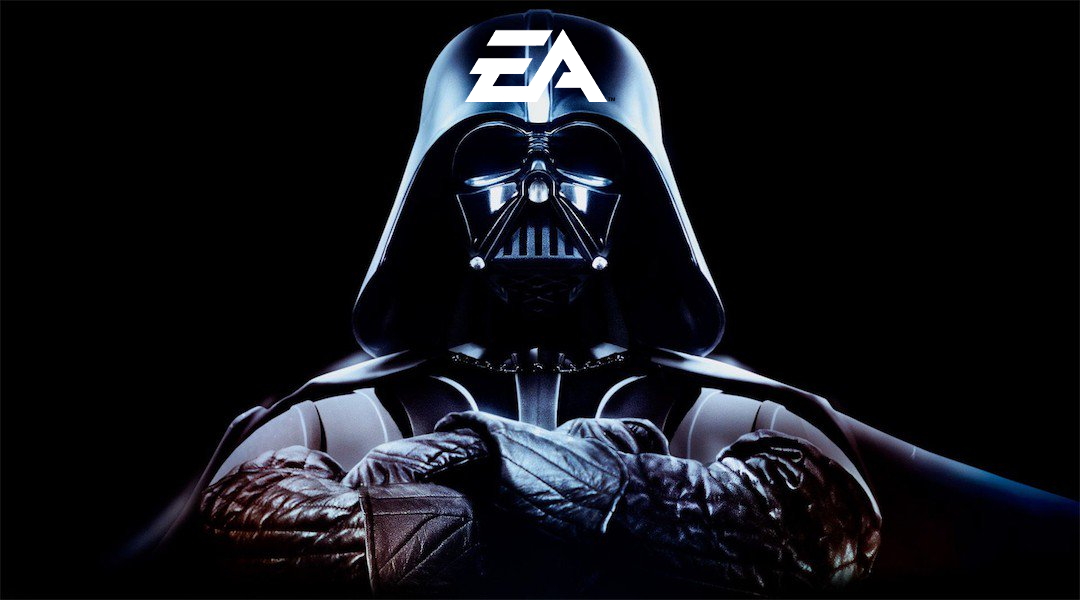
I hope, I mean I really hope, that Electronic Arts has finally gone too far. First, let’s not forget that when they were first formed by Trip Hawkins back in 1982, their approach was that developers were artists and they treated them that way. But things changed. They have been developing disgusting, money-grabbing pseudo-games for a long time now, and doing so with relative impunity. From the atrocious, insulting release of Dungeon Keeper mobile, a grotesque violation of the groundbreaking original series, the remake of which requires you to either wait for extended periods of time before your imps could continue to break down walls or buy crystals for real money so you can continue playing, to their more recent release of Need for Speed Payback which has you apply cards to cars in order to spec them out, however the cards are limited to only one car and they appear as a slot machine gameplay mechanic, the results of which are supposedly random. Never mind the idea that using cards as a means to upgrade cars makes no sense in the first place, nor does the random acquisition – those aren’t how upgrades work: remember the concept of ludonarrative dissonance? Racing games usually have you earn money by winning races and using that money to buy upgrades that you choose to fit your driving / playing style, which makes perfect sense. Just listing these two examples makes my blood boil, for many reasons. I have been a fan of Need for Speed for a long time (especially the police chases), and Dungeon Keeper, a game in which you design a dungeon to attract monsters who defend against invading heroes, originally released in 1997, is a game I spent many hours with and whose brilliance shines to this day. You could even possess the monsters who made their way into your dungeon and see it in a first person perspective.
And that’s the core of the issue. It used to be that when you bought a game, you bought the whole game. Games were designed as complete, compelling experiences meant to tell a story or provide an experience. You played the game, and either that was it or you played it again, perhaps trying new tactics or exploring new areas. Now, however, games are simply vehicles for monetization; It is determined how a property can be monetized, in other words how can it be developed so that once people buy the game they will need to continue to pay to fully experience it, and then a game is developed around that. They are not designed to be a game, to be fun, they are designed from the ground up to get you to keep paying. Look at this loading screen tip from Madden mobile for further proof: They outright tell you to buy ‘item packs’ to improve your game!
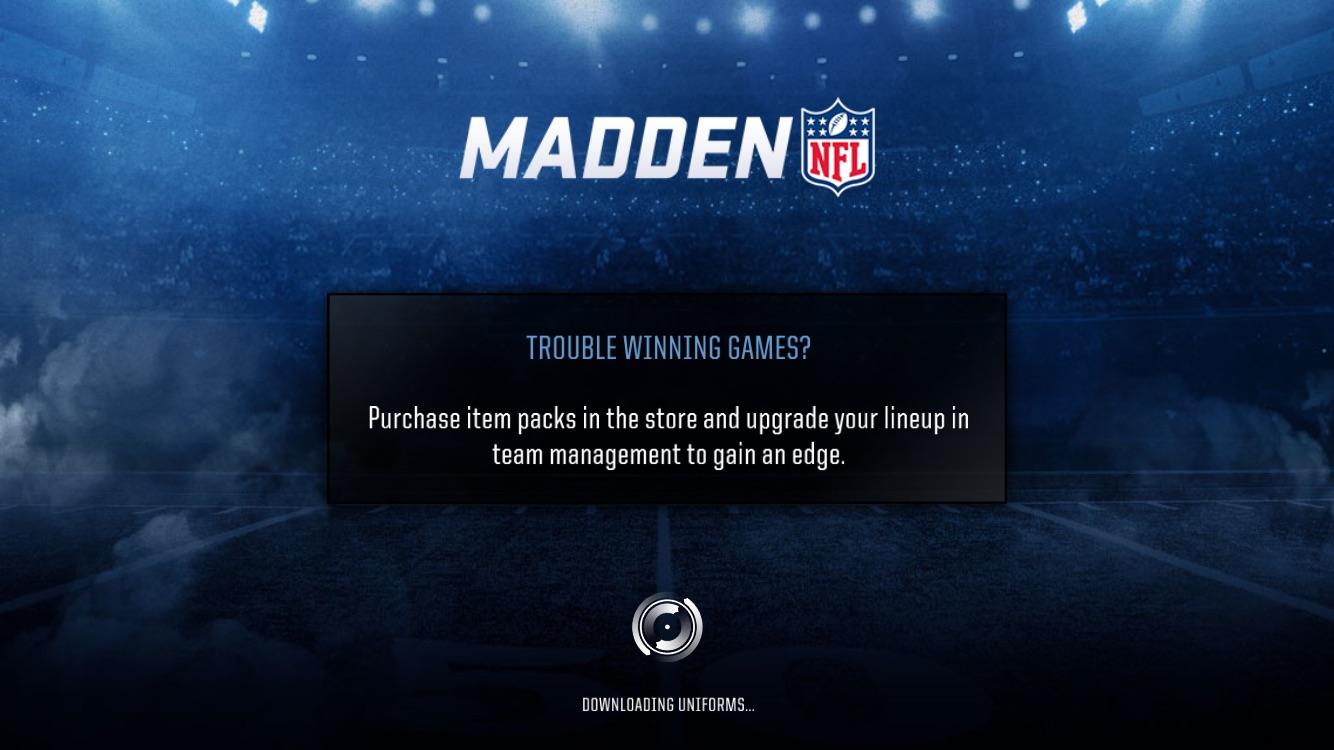
Thanks for the advice, EA (found on Reddit)
So back to Dungeon Keeper and Need for Speed. Both of these were once great franchises that EA destroyed by developing for the purposes of pushing lootboxes or their equivalent as opposed to compelling gameplay, but they had been doing this kind of thing for so long that I guess they felt they could do whatever they wanted. Speaking of which, it is important to note that EA is by no means the only company doing this – not by a long shot.
And then, Star Wars Battlefront II happened. I’ll bet EA never saw it coming, and from what I can tell they didn’t. I hope they didn’t, because their surprise and confusion over the backlash would make the whole thing that much better.
You see, EA decided that many of the characters and items in their new release of Battlefront II, itself a long-lived and beloved franchise, would be only attainable via lootboxes that contained random content, which may or may not be the ‘thing’ you as the player are looking for. If you didn’t want to grind away for who knows how long – Days? Weeks? – to get the stuff, you could pay real money instead. You could also buy lootboxes to get game-changing benefits that severely unbalance the game in your favor, and against everyone else’s: In one video I saw, a player paid real money and got the ability to lock on to targets 200 percent faster than others. The environments in that video really look nice, too, which makes the whole thing that much more troubling – it looks like there could be a good game in there.
Although there has always been backlash against this nonsense, what EA tried to do with Battlefront – remember, Battlefront is a long-running and revered franchise originally developed by Pandemic and published by Lucasfilm – unleashed the rage of countless gamers and has begun a snowball reaction that has even surprised us. First came the Reddit rage. Lots of rage comes from Reddit, but this was different: It was loud, and it was sustained. So severe was the response that EA backpedaled and made some changes, however they also stated they were not removing the lootboxes altogether.
Again, I think EA was blindsided by the response because this practice is nothing new to them. But never mind EA Spouse, or them having the most downvoted post in Reddit history, which itself was in response to a Reddit user who created a spreadsheet showing that unlocking high-level characters in Battlefront II would take about forty real hours, or even being named worst company in America two years in a row; what happened next is where this story really takes off.
The uproar was so loud that government agencies around the world started looking at whether the very concept of lootboxes should be considered gambling. The argument is, if you are paying real money in the hopes of getting something of value in return, then it should be classified as such. I am not taking a side on whether it can formally be defined as gambling, I’m just saying that designing games as revenue streams first and games second is a putrid, vile practice.
It seems some agree. Belgium is on the edge of classifying them as gambling (the linked article erroneously states they have, but they haven’t yet), Australia is also investigating as is France, while Denmark has said they don’t meet official gaming (read; gambling) criteria.
Here in the States, and what inspired this post in the first place, representative Chris Lee from Hawaii has taken it a step further and is not only considering lootboxes but the larger issue of predatory business practices in games. He is clearly a gamer himself, he even cited the standard, old-school business model mentioned above, and chimed in on a Reddit thread regarding the topic. He put out an initial video putting forth his opinions on the topic, and it became so popular that he then added a much more intimate, personal take on the controversy, which he intends to be an ongoing video blog covering his dealings with this issue and progress made. It was then that I knew this whole thing has taken on a life of its own. It is, I’m hoping, out of EA’s hands now, and about to be addressed on a much larger and more enforceable scale.
I’m hoping all this attention finally gets game companies back to making games. Not things that look and feel like games at a very low level while requiring the player to continue to buy to continue to play. I’ve been against it for a long time, even going so far as to say some ‘games’ aren’t games at all; they possess no elements of gameplay but want you to keep paying in order to see all the ‘game’ has to offer. One of the worst offenders, a ‘game’ I despise but everyone else loves is The Simpsons: Tapped Out. I love The Simpsons as a TV show, but with the app, what no one seems to realize is that there’s no freaking game! There’s a narrative, but that’s it. You don’t actually *do* anything. Tap on this character, they go into a building. Tap on that character, they deliver a line of dialogue then go in to a building. Tap the money floating above the buildings. If you can afford it, tap here to build a building (which builds over time, unless you pay to build it). Can’t afford it with in-game currency? Or want one of the items only available through a real-money transaction? You know what to do. There’s no skill involved, no character building; I suppose a minimal argument could be made for planning, although even that’s excpetionally limited, and storytelling, which is its strongest point, but there’s no game to go along with it. The Simpsons is not alone, considering in-app purchases are common, indeed rampant, in the mobile space, and even more insidiously they are often aimed directly at kids. That’s why things like this and this and this happen. Remember Joe Camel? He was banned too, for very similar reasons.
Fingers crossed. If I may invoke the names of one of my most beloved franchises that was also ruined (you can imagine by whom), I’d like to think maybe we can get back to making games that are more like Dead Space 1 and 2, and less like Dead Space 3. Wait, what happened to the company that made those first two masterpieces? Oh, that’s right. EA happened. And the second paragraph in the linked article is why we’re where we are right now. Here’s hoping for deliverance from what EA wrought.
UPDATE: Look what I found about three hours after writing this post! US lawmaker who called out Star Wars Battlefront 2 lays out plans for anti-loot box law.
The new Firefox browser seems pretty good so far

I’m an Opera guy. Not an ‘opera’ guy, although I have nothing against that particular type of theater, but an Opera browser guy. Many years ago I was a Mozilla Firefox guy, especially as they rose from the once-great Netscape Navigator, however for many years now Opera has been the Samsung Galaxy to Firefox’s iPhone; in other words, Opera always had features that Firefox offered much later or didn’t have at all except through add-ons, and was simply faster, more responsive, more stable, and easier to use. Not only that, Firefox has been infamous for its memory leaks, a problem it was never able to solve (Chrome, too, let’s not forget about Chrome). I should also mention in the issue of fairness that plugins could exacerbate the problem, however the base browser always struggled with the issue as well.
Now, however, Mozilla has released the latest version of its Firefox browser, named Firefox Quantum, and it is the first major update for the browser in almost thirteen years; you can read the blog entry straight from the horse’s mouth here. They claim it’s faster, better, has more features, is better able to manage resources, is compatible with new and emerging web technologies, and has many options for customization and configuration. It’s been redeveloped from the ground up, and it shows.
I gave it a run to see how it is, and it certainly does appear to be better. Very fast, very responsive, clean interface whose elements can be dragged-and-dropped to rearrange them anyway you like, which is very nice. I started up some test sites to see how they loaded, including UCI’s homepage, IS301.com, Amazon, Plex’s homepage as well as my Plex home server, Hackaday.com, eBay, and Rotten Tomatoes. I also left up the default start page.
The tabs loaded quickly, although plex.tv and this site took longer than expected, however while comparing response times with Opera, they loaded slowly there as well so the problem was obviously server-side and not an issue with the browser itself; testing them later resulted in equally speedy load times. That wasn’t the case with actually playing videos using Plex, though – Firefox took much, much longer to buffer than did Opera, almost three times as long; I was unable to discern why but the issue was repeatable and consistent. Barring that anomaly, everything else was very snappy and without hesitation. One thing I should add about measuring response times: It is very difficult to do client-side, and is often done via what is known as a stopwatch test, doable in code or with an actual stopwatch. Needless to say, I find those both very unreliable and so went with my own observation to get a general sense of how Opera and the new Firefox compared.
Firefox also has many new features, including deeper integration of Pocket, a personal web-content aggregator that Mozilla bought and integrated a while ago. I have never used it, but can understand how it could be quite beneficial for some. It also has an excellent snapshot feature that allows you to take a screenshot of all or part of a page and save it locally or share it to their cloud service. I don’t know why someone would use the latter, but the former is something I use quite a bit with Opera, and as we will see Firefox does it much better. There is also the aforementioned interface configurations, the library which is just a collection of your browsing history and bookmarks, syncing across devices, and more. As the header image shows, they even have a new icon!
Of course, that’s where the important issue comes up. The fact is, while the new Firefox browser appears to be much faster, more responsive, more stable, everything I said about Opera earlier, what that essentially does is bring it on par with Opera, except in the case of Firefox’s better screenshot functionality which I will discuss later in the post. I tested each page I loaded in Firefox against the same page as it loads in Opera (with three times as many tabs open in Opera, no less) and the performance was the same. Opera wasn’t better as it had been in the past, it was simply the same. That’s a comment on both Firefox and Opera; how well Opera has been in the past, and the catching up Firefox had to do, and did quite effectively and impressively, to reach it.
As mentioned earlier, there is one big difference in which Firefox easily takes the lead, and regarding a feature I use often – the screenshot feature. Both Opera and Firefox have had this feature for some time, and as stated I use it frequently, although now Firefox’s implementation is much better (MUCH better) – it can identify sections of a screen, such as a headline or picture or other element, as you move your mouse, and snip that out, while Opera requires you to adjust a selection box. Additionally, Firefox has the neat ability to capture a whole webpage as a snapshot, even if parts of it are not visible in your browser – the image below was taken in Firefox even though the entire footer and about 20 percent of the header were not visible when I did. That is a great feature, one that surpasses Opera’s full-screen (note: not full-page) capture, and might be the clincher for some; it almost is for me.
Opera, on the other hand, allows for screencaps to be marked up in a very limited fashion right in the capture window, something Firefox does not, however this is less of an issue for me as I usually use GIMP if I need to make extensive edits, and IrfanView if I need to make any size adjustments, batch actions, or simple crops. Good thing, too, since all Opera allows one to do is add some arrows or stickers; Regardless of what Opera says, it’s not actually editing at all. In terms of flexibility, Firefox is the clear winner in this category.
For these reasons, I can and will whole-heartedly recommend Firefox to anyone interested as I think the improvements are significant, but I won’t stop using Opera as it already had many of these features, as well as unit conversion that happens automatically when you highlight a measurement. It also has a customizable, tiled home screen that I find to be very useful; it’s one of my favorite features of Opera and the one I use most often. The new Firefox has something similar, with a single row of six, or double row of twelve, small tiles representing your ‘top sites,’ which can be edited or added to, but not rearranged; ultimately, it’s not as configurable as Opera’s landing page, and very curiously its screenshot functionality is disabled there also.
Whichever you prefer, they are now both very good browsers, with the choice being one left up to the preference of the user. I haven’t used Firefox in forever, but I am very pleased to see it in this new form and I hope it continues to get better and better. As I mentioned earlier, I can wholeheartedly recommend it now, something I couldn’t do before, and I will likely use it as a back up browser in place of Chrome, my current backup. There are of course many other choices in browsers, including Vivaldi, Pale Moon (don’t let the terrible web page scare you), and Brave, to name a few, as well as the more well knowns, however here I was only comparing the new Firefox to my main choice. Speaking of which, I was just notified that an update is available for Opera! Here we go…
Bing does Halloween Right
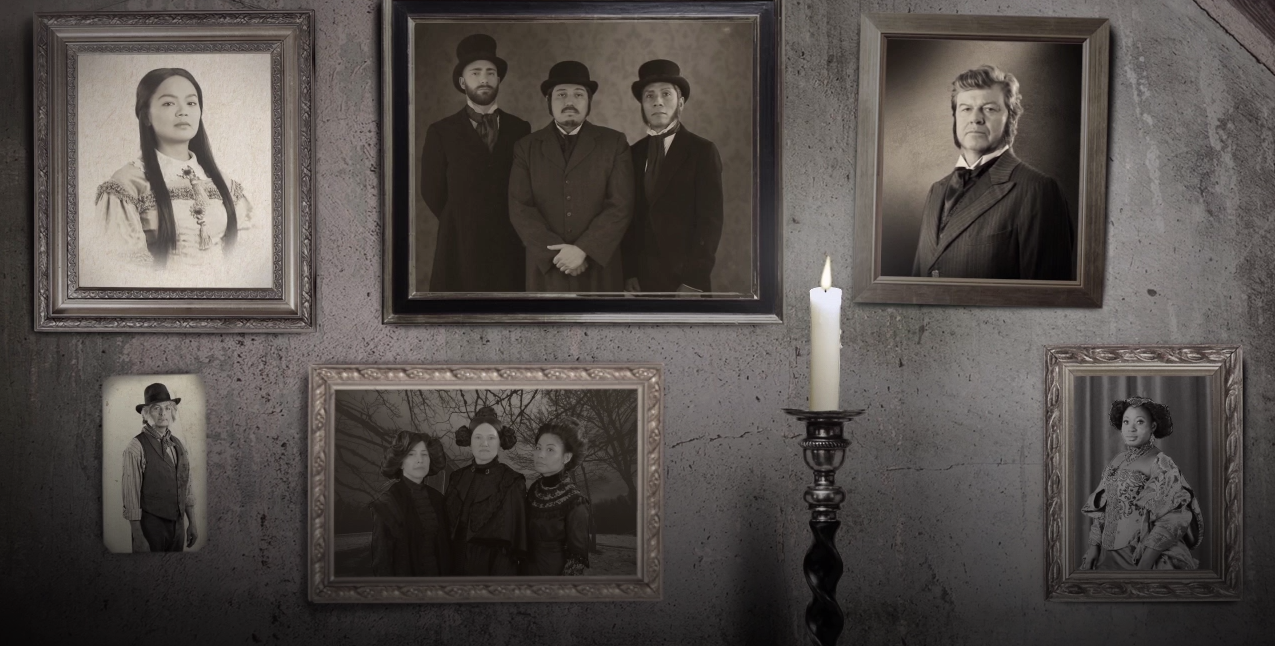
Everyone knows I am a big fan of Microsoft. I always have been, even when their products were of questionable quality; what can I say, I like the company. But now, their products are masterfully designed and fully capable, a pleasure to use. Never mind they come with pricing to match, something that was once the sole domain of Apple (as were those other qualities, ahem).
Even so, I am not here to extol the virtues of Microsoft’s products or even software. No, I am here to compliment their masterwork on one of their services that, sadly, is often targeted for derision: Bing. Fan I am of Microsoft, and user of Bing, the fact is it simply doesn’t provide strong results when I do a search. It will give me results that are ten years old, not relevant to what I’m asking, or just plain bizarre. I’m no fan of Google, but I will say they do search better. So you’ll understand my elation when I can finally give Bing high praise for easily blowing Google out of the water at something search related.
Well not search related per se, but more their search page. This year, for Halloween 2017, Bing absolutely nails what a Halloween page should be, and destroys Google’s feeble video in the process. Score one for Bing! Their (almost) fully interactive homepage shows living portraits hanging on a staircase wall, and most of them have, shall we say, a unique personality when you click on them. You can view the page at any time of year by following this link, however if for whatever valid reason you have an aversion to Bing, you can also see it in the video below. Well done Bing! The fact you do Halloween right makes up for all the ineffective searches I’ve done with you over the prior year.
(I tried to research how specifically this page was created but found nothing. Probably because I searched on Bing. Still, I love the page, and I’ll always be a fan, Microsoft!).
It finally happened

I have the feeling this story could get convoluted. Let me sum up right at the beginning: I have finally received a threatening letter accusing me of copyright infringement, from the Entertainment Software Association (ESA). Some background:
I have been playing vanilla WoW, off and on, for months on a private server known as Elysium-Project. I wrote about the experience not too long ago right here on this site (we’ll get to Felmyst later in this post). The thing about this server is that in order to download the client you have to do so through a torrent, which right away gives the impression of impropriety. I had downloaded it once before, using the uTorrent client, to use on my desktop, and everything seemed above the board.
Recently, though, I downloaded it again, using the exact same torrent client, however this time it was on my laptop. Immediately, even before the file finished downloading, I received the following email from my ISP, Cox Communications:
Dear Customer,
We are forwarding a notice received by Cox Communications which claims that someone using your Cox High Speed Internet service has violated U.S. Copyright law by copying or distributing the copyrighted work listed in the attached complaint. THIS COMPLAINT IS FROM A THIRD PARTY AND NOT FROM COX COMMUNICATIONS. We have included a copy of the complaint, which identifies the party making the claim, the title or work they claim was infringed, and the date of the alleged infringement.
We ask that you review the complaint and, if you believe it is valid, promptly take steps to remove or disable access to the infringing material (typically movies, music, books, or TV shows). If other parties are using your account, such as through your WiFi connection, you should ask them to disable file-sharing in peer to peer applications such as BitTorrent, or delete the copyrighted works.
If you disagree with the claims and believe that no one using your Internet service could have been the source of the alleged infringement, please do not contact Cox Communications to resolve this matter. Cox is simply forwarding the notice to you. However, if you have WiFi, please make sure your WiFi connection is secured with a strong password to prevent unauthorized use of your Internet service. In addition, make sure anti-virus software is installed and up to date to help prevent malware infections.
PLEASE NOTE: THE ATTACHED NOTICE MAY CONTAIN A SETTLEMENT DEMAND FOR MONEY OR OTHER TYPE OF OFFER FOR YOU TO CONSIDER. YOU MAY WANT TO CONSULT WITH AN ATTORNEY REGARDING YOUR RIGHTS AND RESPONSIBILITIES BEFORE CLICKING ON ANY LINK OR VISITING A WEBSITE LISTED IN THE NOTICE.
The material that you share online or make available for sharing is your responsibility. Cox encourages responsible Internet use, but we do not monitor nor control the information you transmit. We have a policy, however, consistent with the Digital Millennium Copyright Act, to take steps when we receive notifications of claimed infringement. We also have a policy of terminating repeat infringers in compliance with the Digital Millennium Copyright Act Safe Harbor for online service providers.
If we continue to receive infringement claims notices for your account, we may in appropriate circumstances suspend your account, disable your Internet connection, and/or terminate your Internet service.
For information about Cox’s Acceptable Use Policy, including copyright infringement, please refer to:
https://www.cox.com/aboutus/policies.htmlTo learn more about your responsibilities concerning copyrighted material, please refer to our help article at:
https://www.cox.com/copyrightGeneral information & FAQs about DMCA notices:
http://www.respectcopyrights.org/
http://www.riaa.com/toolsforparents.php?content_selector=resources-music-copyright-notices
If you would like to reply to this email, please keep the subject line intact for tracking purposes.
Sincerely,
Cox Customer Safety
— Original Message —
[Part 0:0 (plain text)]
—–BEGIN PGP SIGNED MESSAGE—–
Hash: SHA12017-10-07T03:15:10Z
Entertainment Software Association
601 Massachusetts, NW, Suite 300, West
Washington, DC 20001 USAAttention:
Intellectual Property Enforcement
Website: http://www.theesa.com/wp-content/uploads/2014/12/DMCA-FAQs-Updated-12-2014.pdf
E-mail:
[email protected]Cox Communications
Re: Copyright Infringement by Cox Communications Subscriber
Using IP 98.164.255.62 on 2017-10-07T03:14:58Z (the “Subscriber”)
Reference Number c7ed1b3845618ac0d707Dear Cox Communications:
The Entertainment Software Association (“ESA”) is the U.S. trade association that represents the intellectual property interests of companies that publish interactive games for video game consoles, personal computers, handheld devices, and the Internet (hereinafter collectively referred to as “ESA members”).
A list of ESA members can be found at http://www.theesa.com/about-esa/members/.
Under penalty of perjury, we affirm that ESA is authorized to act on behalf of ESA members whose exclusive copyright rights we believe to have been infringed as described below.ESA is providing this notice pursuant to the Digital Millennium Copyright Act (“DMCA”), 17 U.S.C. section 512, to request that you take immediate action with respect to infringement of ESA member copyrighted works by your Subscriber.
Using the IP address on the date and time referenced in the subject line of this notice, the Subscriber or someone using their account employed a peer-to-peer service or software to distribute one or more infringing copies of ESA members’ games, including the following title:Warcraft (franchise)
Courts in the United States have held consistently that the unauthorized distribution of copyrighted works using peer-to-peer or similar services constitutes copyright infringement.
E.g., MGM Studios, Inc. v. Grokster, Ltd., 545 U.S. 913 (2005); BMG Music v. Gonzalez, 430 F.3d 888, 891 (7th Cir. 2005); Arista Records LLC v. Lime Group LLC, 2010 U.S. Dist. LEXIS 46638, *49 (S.D.N.Y. May 11, 2010This Subscriber should understand clearly that there are serious consequences for infringement.
The Copyright Act in the United States provides for statutory damages of up to $30,000 per work infringed, and up to $150,000 per work for willful infringement.
17 U.S.C. section 504(c).We ask that you work with us to protect the intellectual property rights of ESA members by:
1. Providing the Subscriber with a copy of this notice of copyright infringement, and warning the Subscriber that his or her conduct was unlawful and could be subject to civil or even criminal prosecution.
2. Promptly taking steps to stop the Subscriber’s infringing activity.
3. Pursuant to 17 U.S.C. section 512(i)(1)(A), as appropriate, terminating the account of the Subscriber if your records show that he or she is a repeat copyright infringer.ESA has a good faith belief that the Subscriber’s reproduction and/or distribution of these copyrighted works as set forth herein is not authorized by the copyright owners, their agents, or the law.
The information in this notification is accurate.
Neither ESA nor its members waive any claims or remedies, or their right to engage in other enforcement activities, and all such claims, rights and remedies are expressly reserved.If your Subscriber has additional questions about this notice, we would encourage them to visit http://www.theesa.com/wp-content/uploads/2014/12/DMCA-FAQs-Updated-12-2014.pdf to learn how to delete the infringing material and avoid receiving future notices.
Thank you for your prompt attention to this matter.
Sincerely,
Intellectual Property Enforcement
Entertainment Software Association
Website: http://www.theesa.com/wp-content/uploads/2014/12/DMCA-FAQs-Updated-12-2014.pdf– ————- Infringement Details ———————————-
Title: Warcraft (franchise)
Timestamp: 2017-10-07T03:14:58Z
IP Address: 98.164.255.62
Port: 33768
Type: BitTorrent
Torrent Hash: 2b32e64f6cd755a9e54d60e205a9681d6670cfae
Filename: World of Warcraft 1.12 Client.rar
Filesize: 5197 MB
– ———————————————————————<?xml version=”1.0″ encoding=”UTF-8″?>
<Infringement xmlns=”http://www.acns.net/ACNS” xmlns:xsi=”http://www.w3.org/2001/XMLSchema-instance” xsi:schemaLocation=”http://www.acns.net/ACNS http://www.acns.net/v1.2/ACNS2v1_2.xsd“>
<Case>
<ID>c7ed1b3845618ac0d707</ID>
<Status>Open</Status>
<Severity>Normal</Severity>
</Case>
<Complainant>
<Entity>Blizzard Entertainment, Inc.</Entity>
<Contact>IP-Echelon – Compliance</Contact>
<Address>6715 Hollywood Blvd
Los Angeles CA 90028
United States of America</Address>
<Phone>+1 (310) 606 2747</Phone>
<Email>[email protected]</Email>
</Complainant>
<Service_Provider>
<Entity>Cox Communications</Entity>
<Email>[email protected]</Email>
</Service_Provider>
<Source>
<TimeStamp>2017-10-07T03:14:58Z</TimeStamp>
<IP_Address>98.164.255.62</IP_Address>
<Port>33768</Port>
<Type>BitTorrent</Type>
<SubType BaseType=”P2P” Protocol=”BITTORRENT”/>
<Number_Files>1</Number_Files>
</Source>
<Content>
<Item>
<TimeStamp>2017-10-07T03:14:58Z</TimeStamp>
<Title>Warcraft (franchise)</Title>
<FileName>World of Warcraft 1.12 Client.rar</FileName>
<FileSize>5450407230</FileSize>
<Hash Type=”SHA1″>2b32e64f6cd755a9e54d60e205a9681d6670cfae</Hash>
</Item>
</Content>
</Infringement>
—–BEGIN PGP SIGNATURE—–
Version: GnuPG v1iQEcBAEBAgAGBQJZ2Ea9AAoJEN5LM3Etqs/WBF0H/jpN7FftxC1K3kUH9j6jG4IZ
A7abndRK8UZISWGRCmT0Tj7+itlRmvzwo9/ggZl9RxiuIPR8KCr/cHTgIbcimjni
ycdjkB6kLOi6FHOA8FybJCVdLK/hMlVvKum/WG4j4oaYBf0LEtowXM1DT1XU7GEy
0F8gUaL5waoJjXuZsA/p88LUhb3Wpmx4BQ6CpzXo96We/JDd+rIApkUsEq56m71s
4Qy5gK3VQVvd3DxqEFZEfU984RBYB3j8i3RCRrHssLUUa4L02Gp3AYpc0szmcOQ8
ZZAtJTOjkCmBUllxo9LNCwgDDQwtybL/QedED4+amO2h7tlLoYfZtuH6qRshpLM=
=iSCJ
—–END PGP SIGNATURE—–
There’s a lot there, but essentially what it is saying is that I committed a copyright infringement not by downloading the Warcraft client, but by also allowing it to be seeded and therefore distributing it. It’s like drug enforcement; the dealers are the problem much more so than the users.
I also have to say I find some amusement in the otherwise serious nature of this email, in that while the complaint from the ESA was very serious and implied significant fines, federal crime, even possible jail sentences, the portion from Cox essentially says “Hey, this is what we were told, now keep us out of it.”
The fact that it came in late on a Friday night while the file was still downloading also makes it quite clear the whole process was automated, both the email to Cox and their forwarding it on to me.
I blame myself for part of this as I never thought to switch off seeding, and when I tried to connect to the private Elysium server after the client download was complete, I neglected to modify what’s known as a realmlist.wtf file to point to Elysium’s server as opposed to the stock Warcraft server. That means that I was attempting to connect directly to Blizzard at first. That’s not what the complaint was about, it was about the redistribution of their client via torrent, but the fact I made that connection error at first was not lost on me.
I don’t anticipate any major problem from this. The second the file was done downloading I deleted the original torrent file and shut down the torrent client. I don’t like to use my limited bandwidth to seed the downloads of others, and I don’t have anything they would want anyway, especially not on my laptop.
So I am ignoring it for now, and in fact I have done what they asked (demanded) I do. It also leads to an interesting legal issue: If you read my previous post about my early experiences on Elysium, you would know that there had been another private server, Felmyst, that was shut down on its very first day, apparently because they were distributing the client along with the game files (or something like that). Elysium, on the other hand, is able to stay up and running because they don’t distribute the client, and therefore no copyright violations are taking place. That seems strange to me since we are playing on a server that uses entirely Blizzard-created assets, but who knows. A quick Google search indicates I’m far from the only one experiencing this, and the issue of monetary gain versus non-profit can have serious implications and Blizzard’s perspective isn’t always so black and white. They’re both very interesting reads.
What I can surmise is, and as I stated earlier, using the client/game once downloaded, even downloading the client itself, is not illegal; it’s the redistribution that’s the problem.
Don’t redistribute clients via torrent, people.
Cleaning battery terminals the easy and mostly-but-not-completely safe way

In my Human-Computer Interaction class, one of the in-class exercises students complete is a usability evaluation that requires them to evaluate a device randomly selected from a list of devices that I bring to class. The devices are nothing overwhelming: they include a numbered Rubik’s Cube, a water ring game, a backscratcher, a ping pong-ball gun to name but a few, and I have included a picture below of a select yet completely random few. In choosing devices for this exercise, which I am always hunting for in places like thrift stores, flea markets, swap meets, discount aisles, etc. (my rule is that I never pay more than $5.00 for an item I intend to use for this class exercise), I have to ensure they possess sufficient functionality to encourage a successful analysis yet are not overly complex.
Because of where I find many of these items, they are occasionally in need of some repair, or at least a vigorous cleaning. For the electronic devices, however, the problem can be more serious with the presence of corrosion from leaking or damaged batteries. If you read the manual for any electronic device, they always contain a section strongly advising that you remove the batteries if you intend to store the item for any length of time, yet few of us ever do, which references both reading the manual and removing the batteries. Because of that, corrosion is an issue I am faced with regularly.
Recently, I acquired an LCD billiards game, which can be seen in the above image, that had aggressive corrosion not only on the terminals but on a solder joint and the plastic casing that sat above them as well. I knew they would have to be cleaned, and it reminded me that in the game collection I donated last year, there was horrendous corrosion on the terminals of the electronic castle from a Dark Tower board game and the handheld electronic component from a Lost Treasure board game. I am not proud of the fact that I left batteries in both those devices. Not only do I know that dead batteries will leak sooner or later, I also know it will happen much faster if left in a battery compartment where they are connected and continuously discharge, which is known known as a parasitic or vampire leak. That builds up hydrogen gas that will, thanks to the pressure, eventually cause a leak. I also know it will happen *much* faster when exposed to high heat. And these sat in a Las Vegas garage for ten years.
So for practical as well as penance reasons, I decided to tackle the corrosion problem and make a post about it to spread the word. It’s not hard to clean, frankly, although whether the device works afterwards is another step. But we’ll get to that – let’s talk about cleaning corrosion.
First was the small LCD billiards game. Upon checking the batteries, the corrosion was obvious, and when I opened it up it was even more than I had anticipated.
You can see the terminal itself is corroded, which is expected, however the corrosion has also clung to the spot where the battery lead is soldered to the main board, and even stuck to the casing above; in fact, it’s worse there! As mentioned, however, it is easy to clean, using only distilled white vinegar which neutralizes the acid into nothing, and the vinegar doesn’t have to be terribly strong – I use a generic brand that’s only 98 cents and is diluted to 4% acidity (acidity will be listed on the label). This is also an opportune time to mention that this only works with alkaline batteries; car batteries are something entirely different and require the using of baking soda and water. You can also use vinegar to clean the batteries themselves but I most certainly do not recommend this; once the leak has started the batteries are of little use anyway. Recycle them and use fresh batteries in their place. No matter what you do, wear gloves and eye protection – this is battery acid we’re talking about here.
I submerged the corner of the device in a small bowl of vinegar, and after a few minutes of aggressive fizzing and hissing, it was all clean. It’s wonderful how well vinegar works for this. You don’t have to do anything; no scrubbing, no washing, no cursing, the vinegar does all of the work, although it will stink afterwards. I recommend the previously corroded components get a rinse with water afterwards but that is not always possible, a gentle scrub with an old toothbrush to remove the odd bits if necessary (although it usually isn’t), let the components dry, and you’re good. The results of the cleaning are below, and the thing now works perfectly.
When I say the vinegar does all the work, I am not kidding.
Next up was Dark Tower, and this one was more difficult and less successful, although the problem isn’t the batteries. As you can see in the following images, the corrosion was extensive. The Electronic Component is a large plastic tower with a rotating segment that lights up, and getting to the corroded battery compartment meant disassembling the tower. Once done, the extend of the corrosion became evident.
Again with the vinegar! I submerged the whole thing in a bowl filled with vinegar, and after about ten minutes came back to find it all clean.
As you can see, there is still oxidation on them, and that will require a stronger approach with a bottle brush and hydrogen peroxide. In fact, the central unit still doesn’t work, and I can’t be sure if it’s because of the remaining cleaning that needs to be done or because of what appears to be a burn on the main board, which may also simply need a cleaning; there’s no component at the location to blow out. I will clean it all up and update with the results. It’s an impressive piece, and a magnificent, non-replaceable game, so I am intent on getting it up and running again.
Lastly was the corrosion in the electronic component of the Lost Treasure board game. This one was more difficult because it was a 9-volt battery terminal that had corroded, and a previous attempt to remove the battery had detached the terminal from the battery itself, which can be dangerous. I cut the connector and soaked the thing in vinegar, however while it was sparkling clean after that, it also left the positive terminal from the battery stuck in the adapter and no amount of finagling with an eyeglass screwdriver and needle-nose pliers was getting it out. Eventually the adapter gave way, detached, and that was that. Fortunately, those are easy to replace and I’ll wire one up when the ones I ordered come in.
I can’t fault the person who tried to remove the battery as I don’t recommend dipping the battery in vinegar to clean it, but it was cemented in place by the corrosion. Pulling out the connecting wire like that isn’t a very desirable result, but in this case I can understand why it happened. Incidentally, you know what 9-volt batteries have inside them? Little batteries!
So vinegar. Never mind about it’s uses for cleaning or washing hair or killing bugs or neutralizing pet stains or clearing your skin or…just look here. When it comes to neutralizing battery acid it’s a miracle worker. Rinsing with water afterwards and allowing to fully dry is important, as are gloves and eye protection, but if you have corrosion, you’ll find that the vinegar soak is usually enough to get any device working again.

